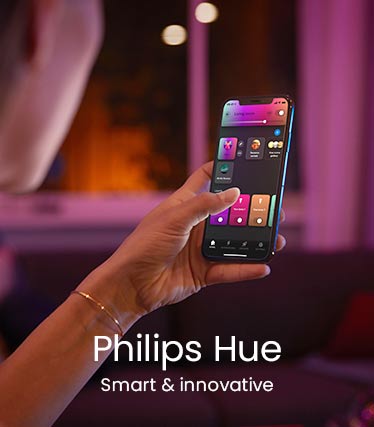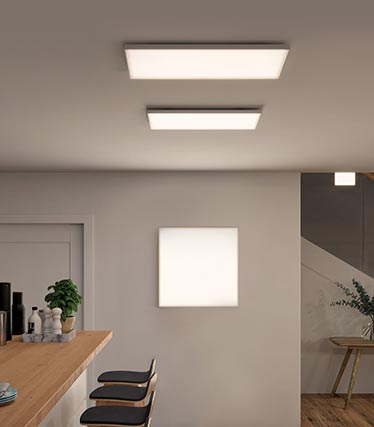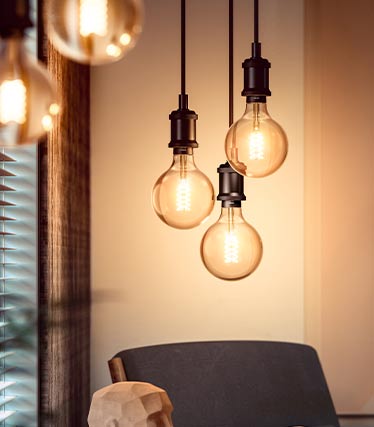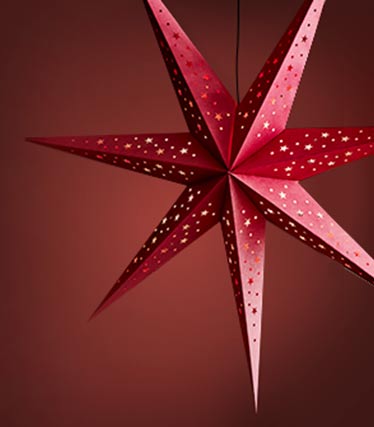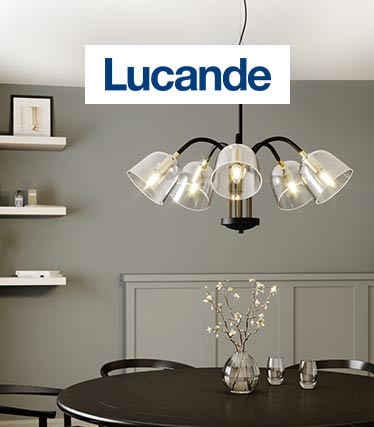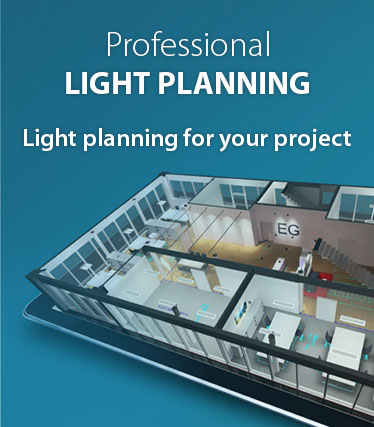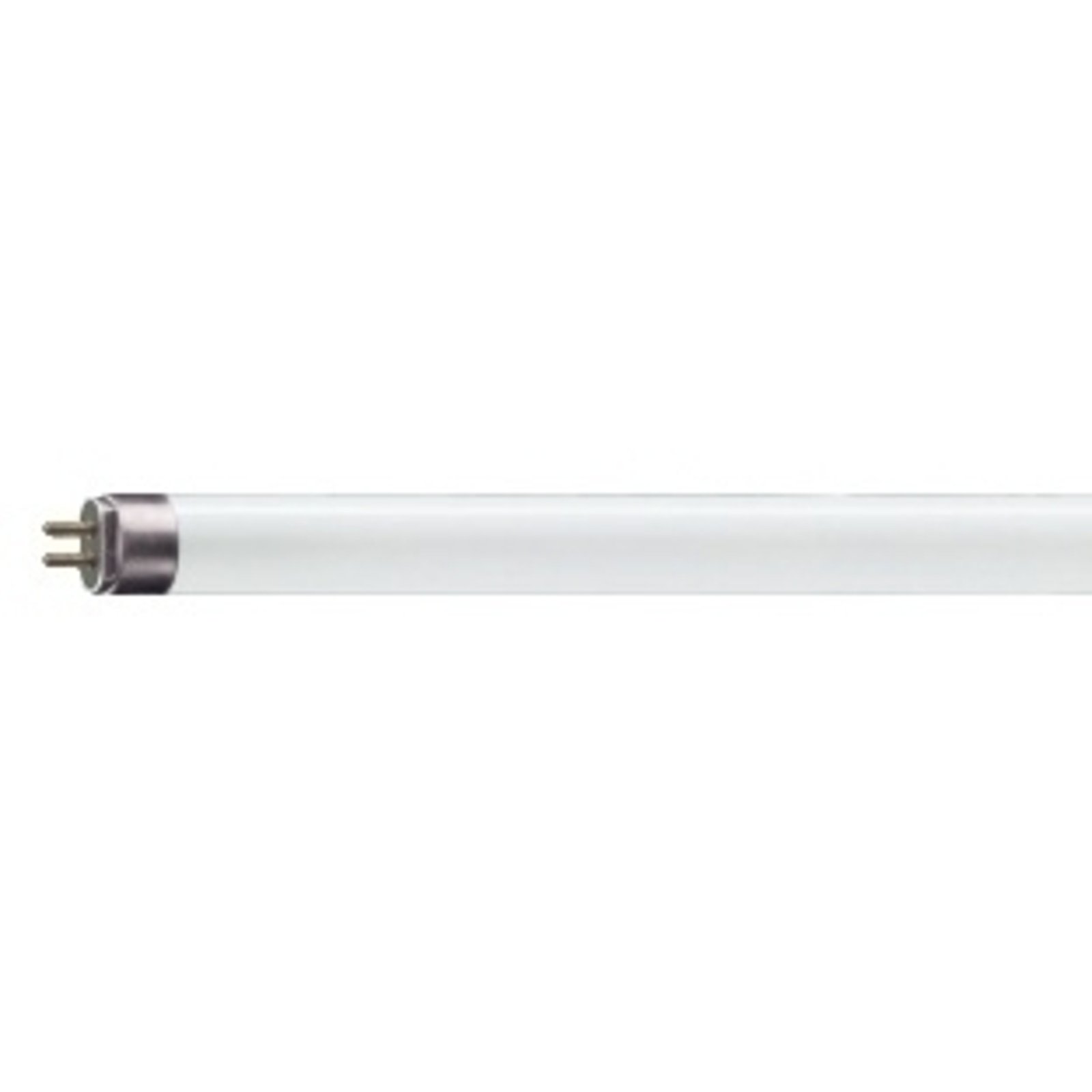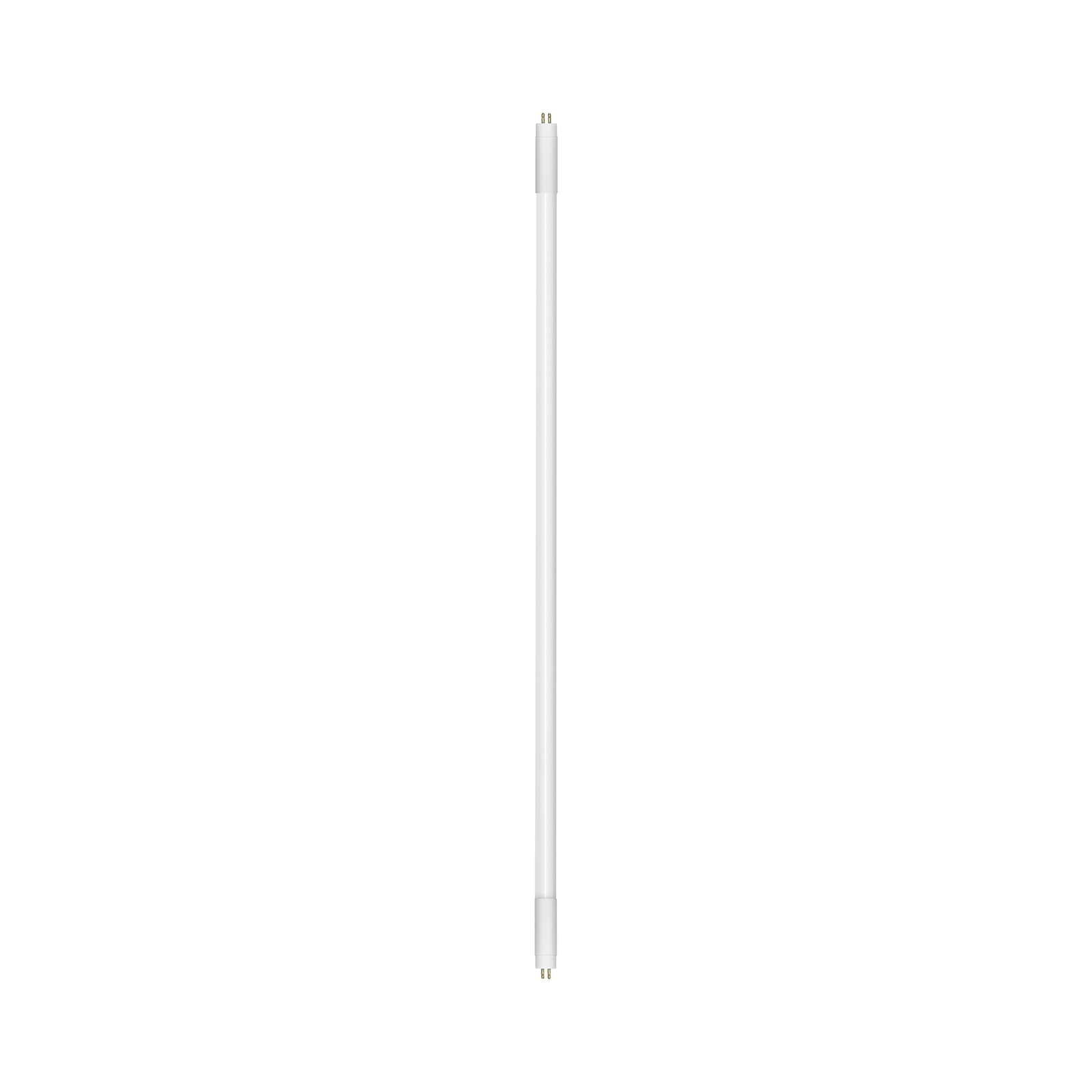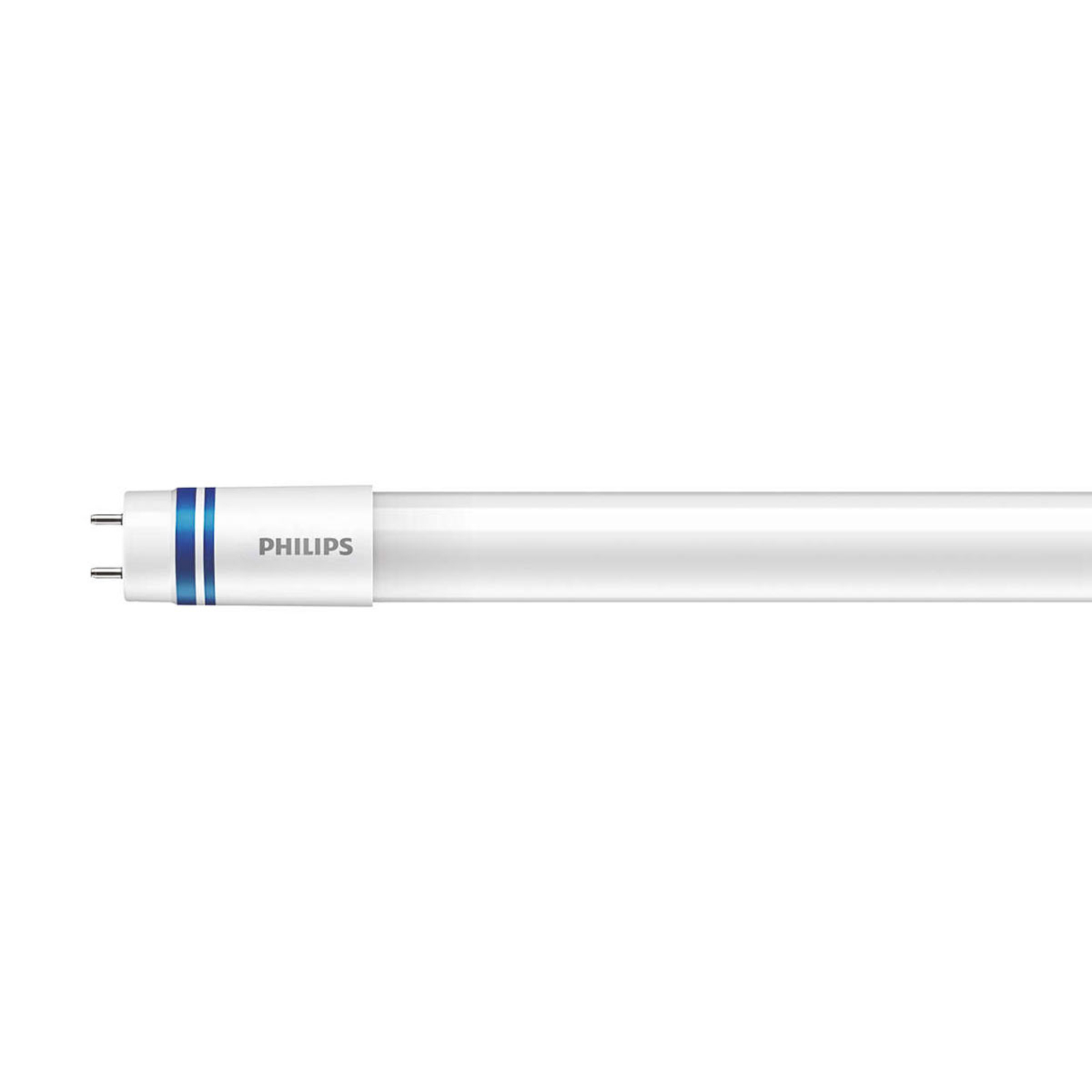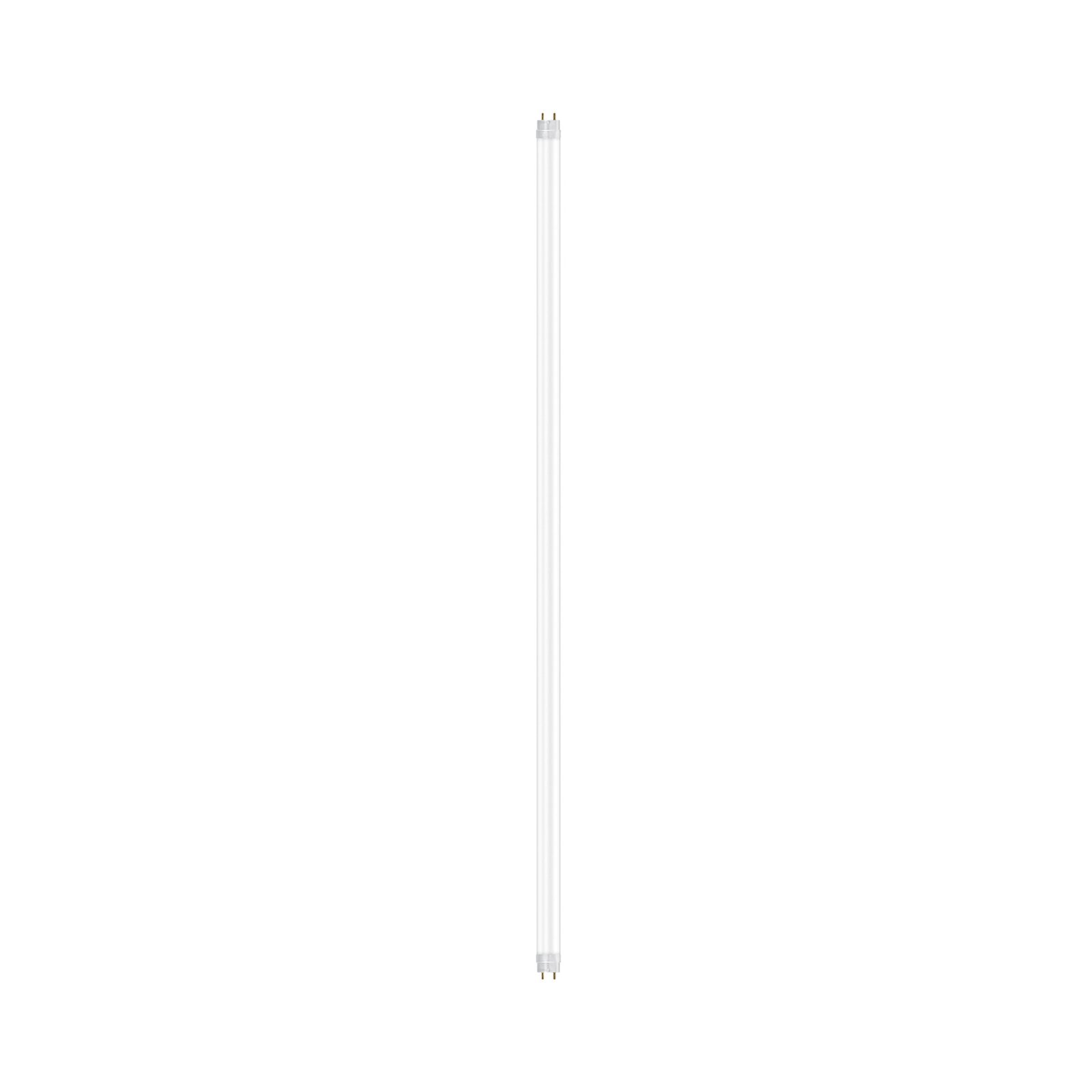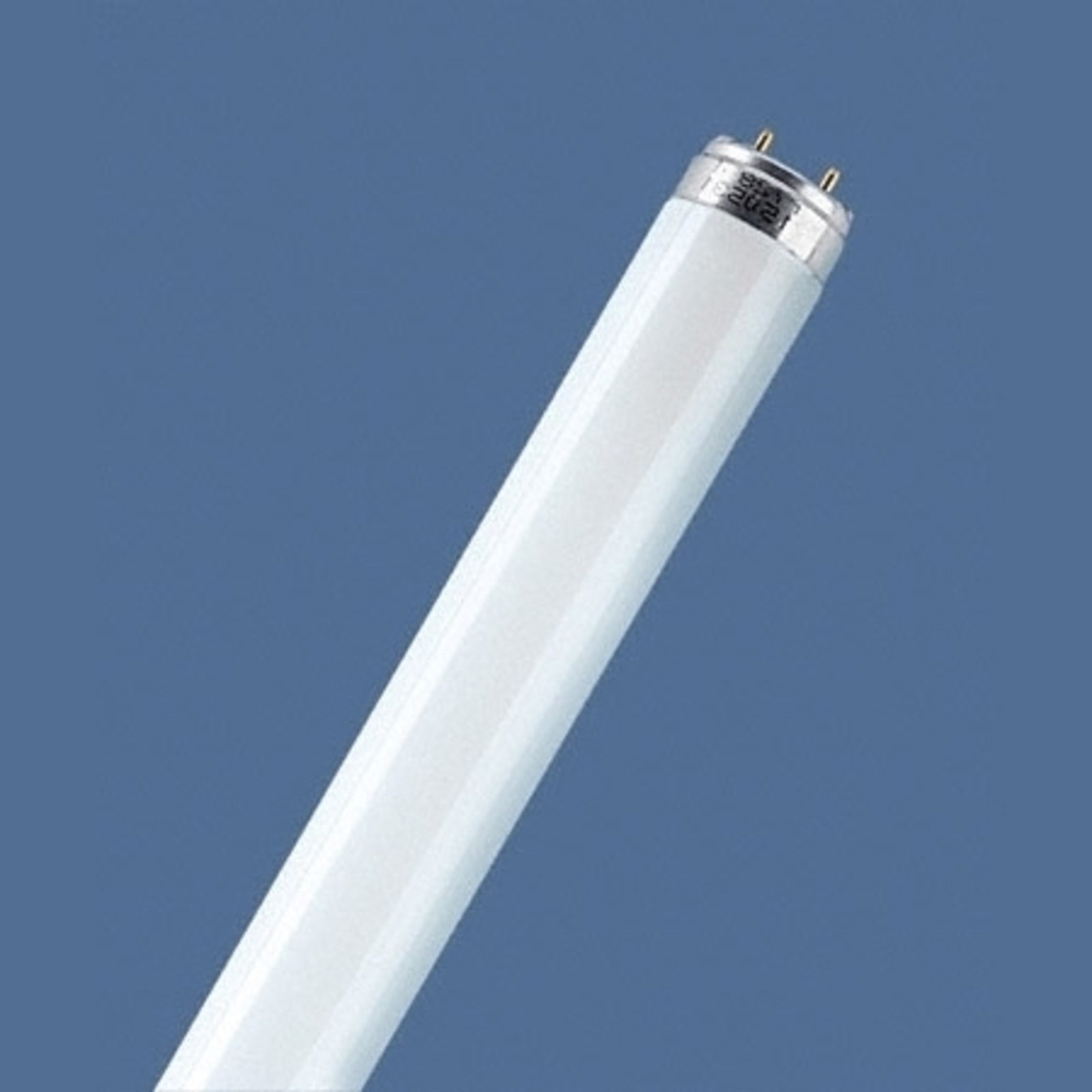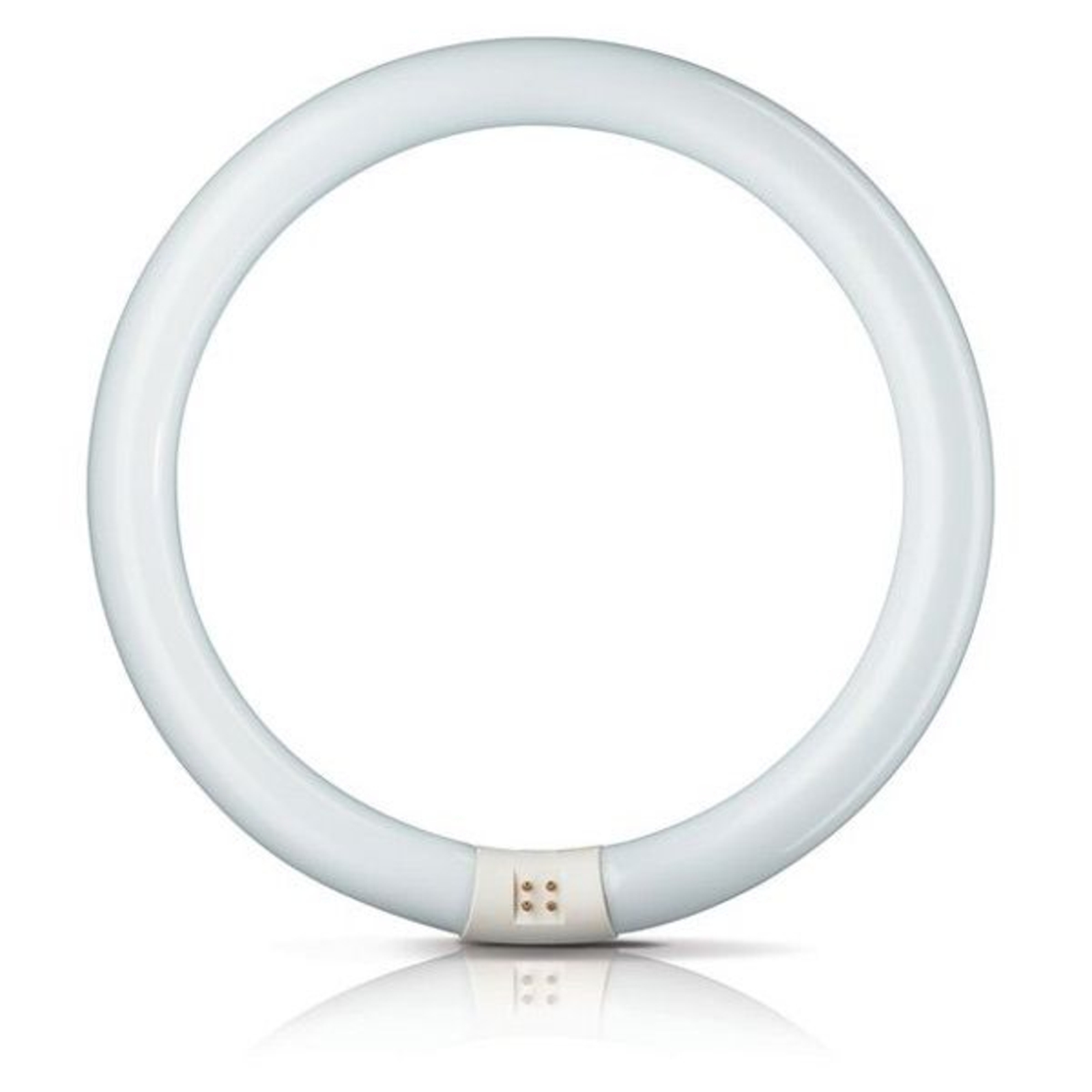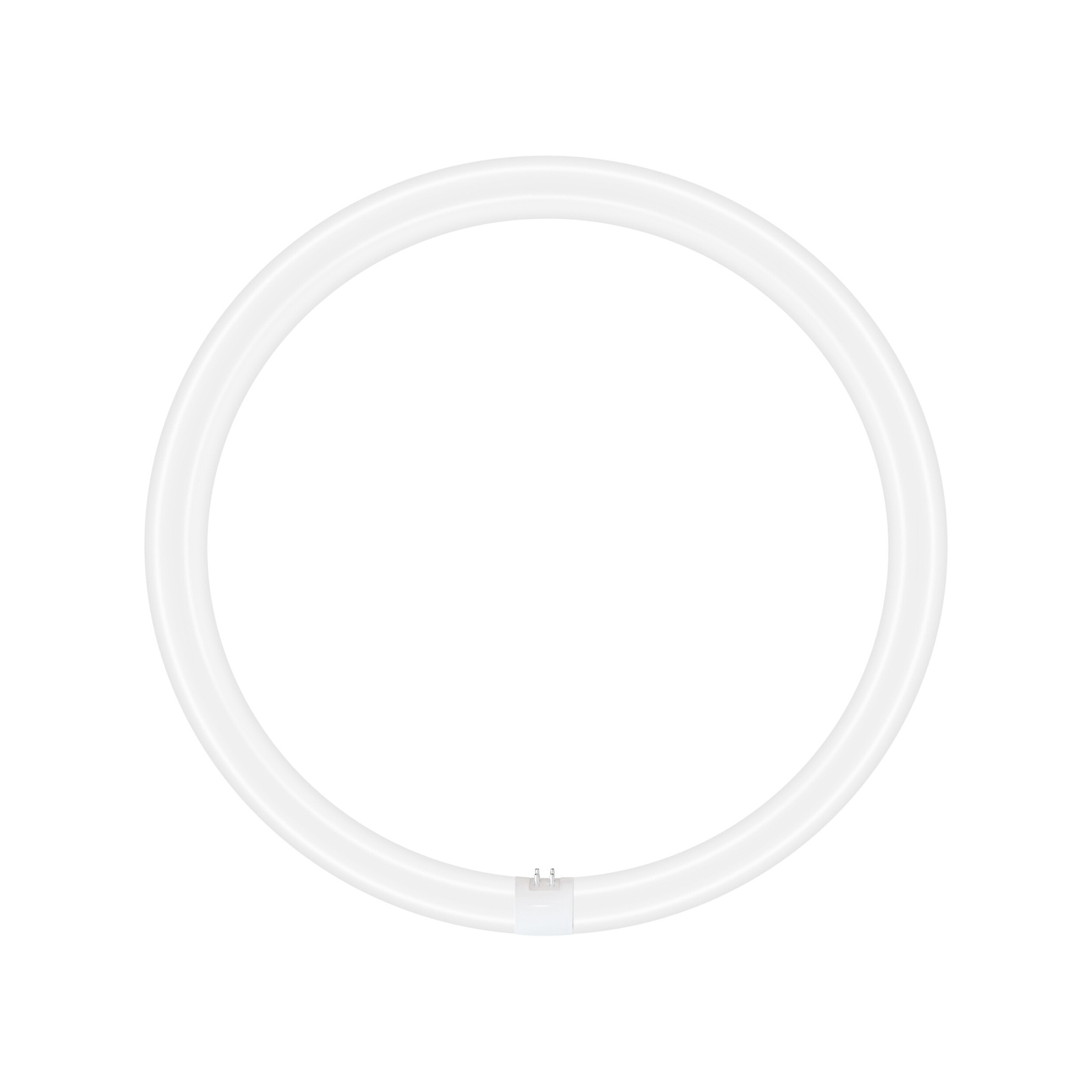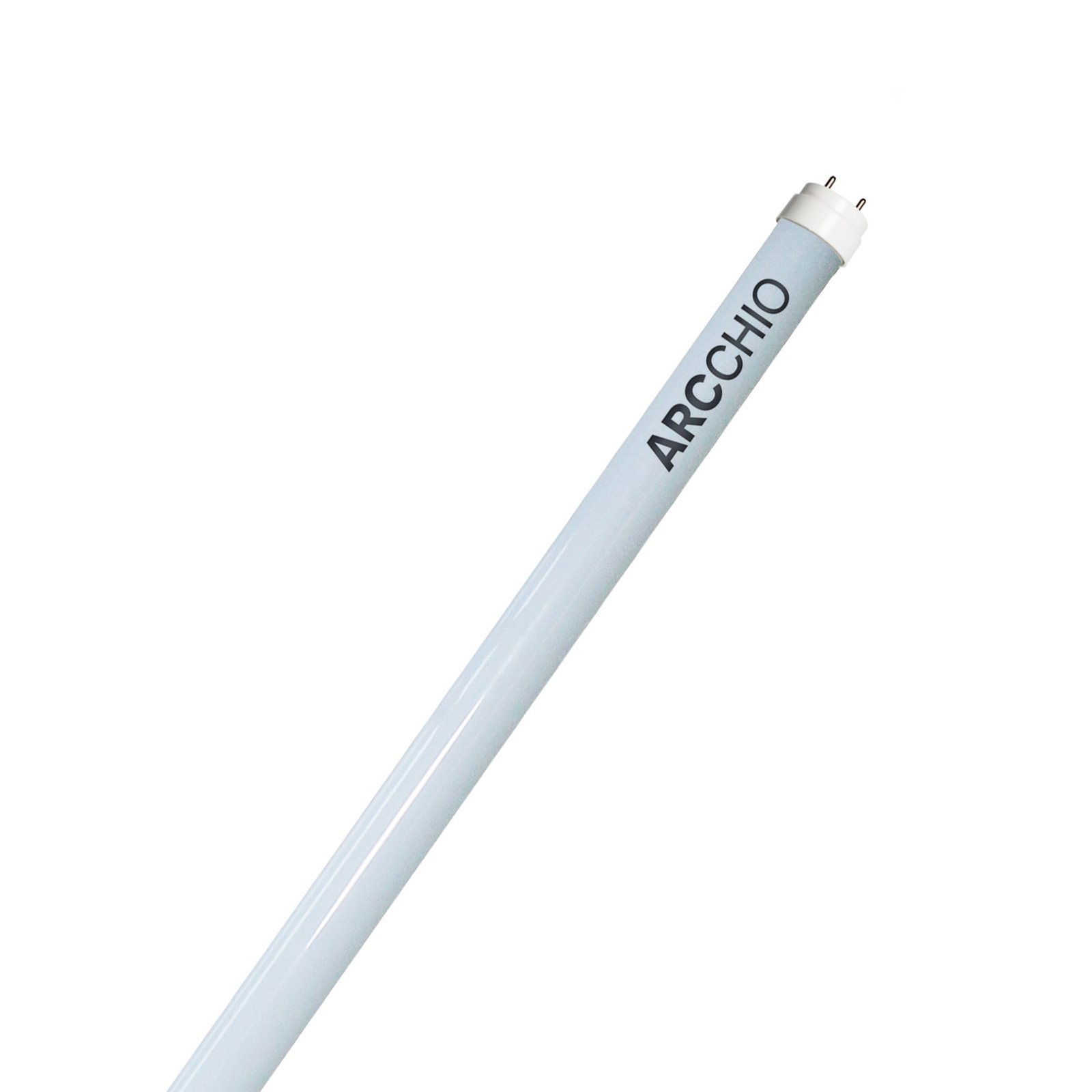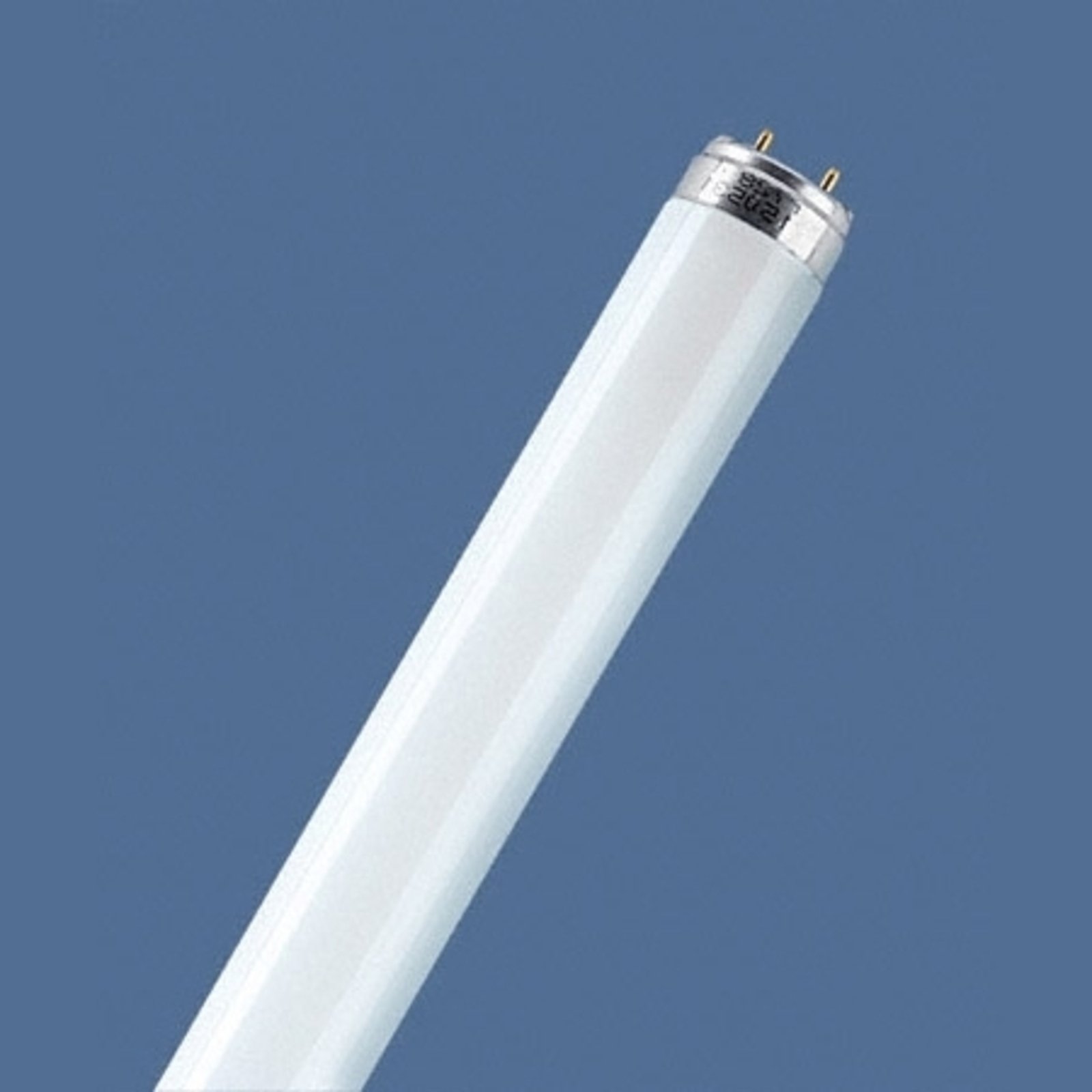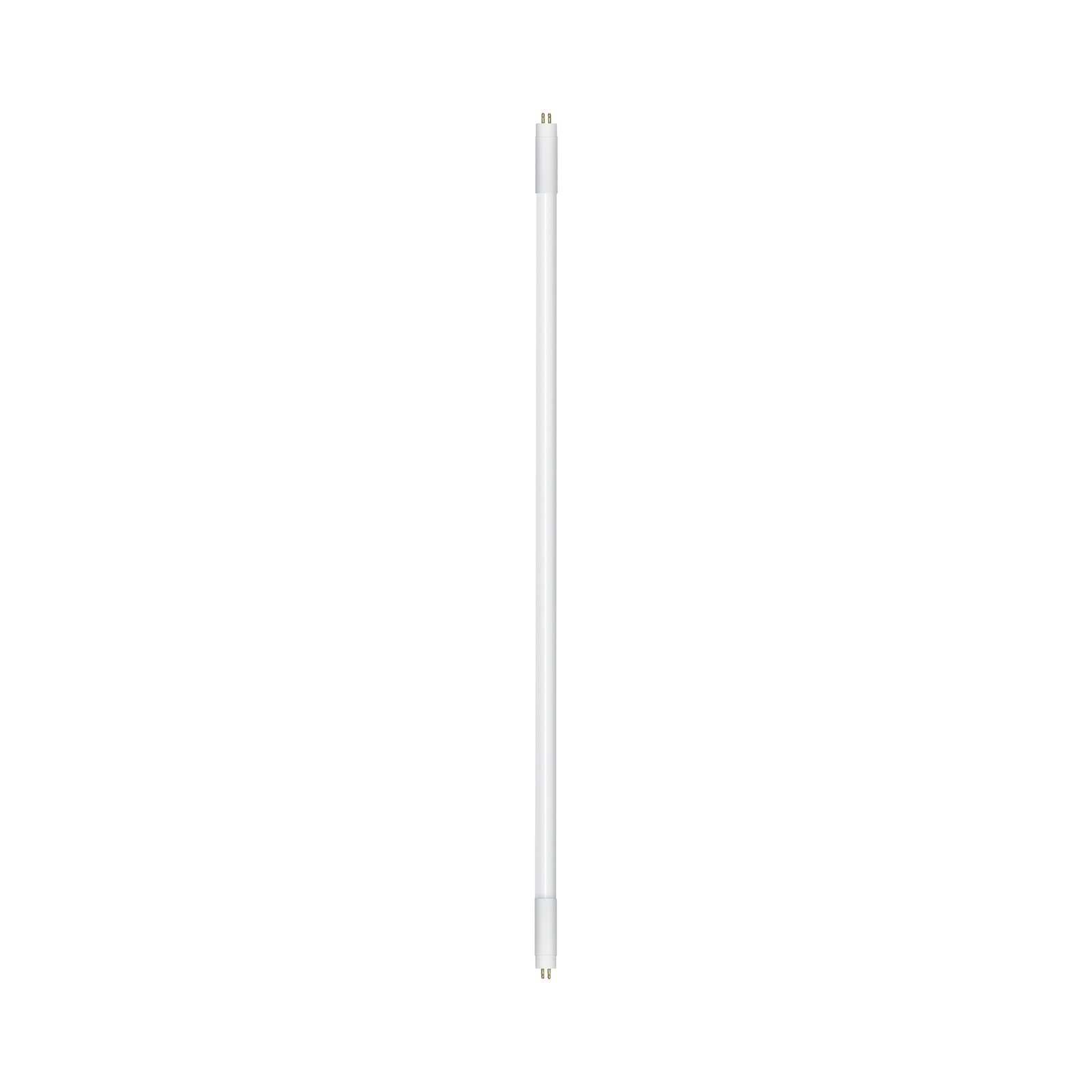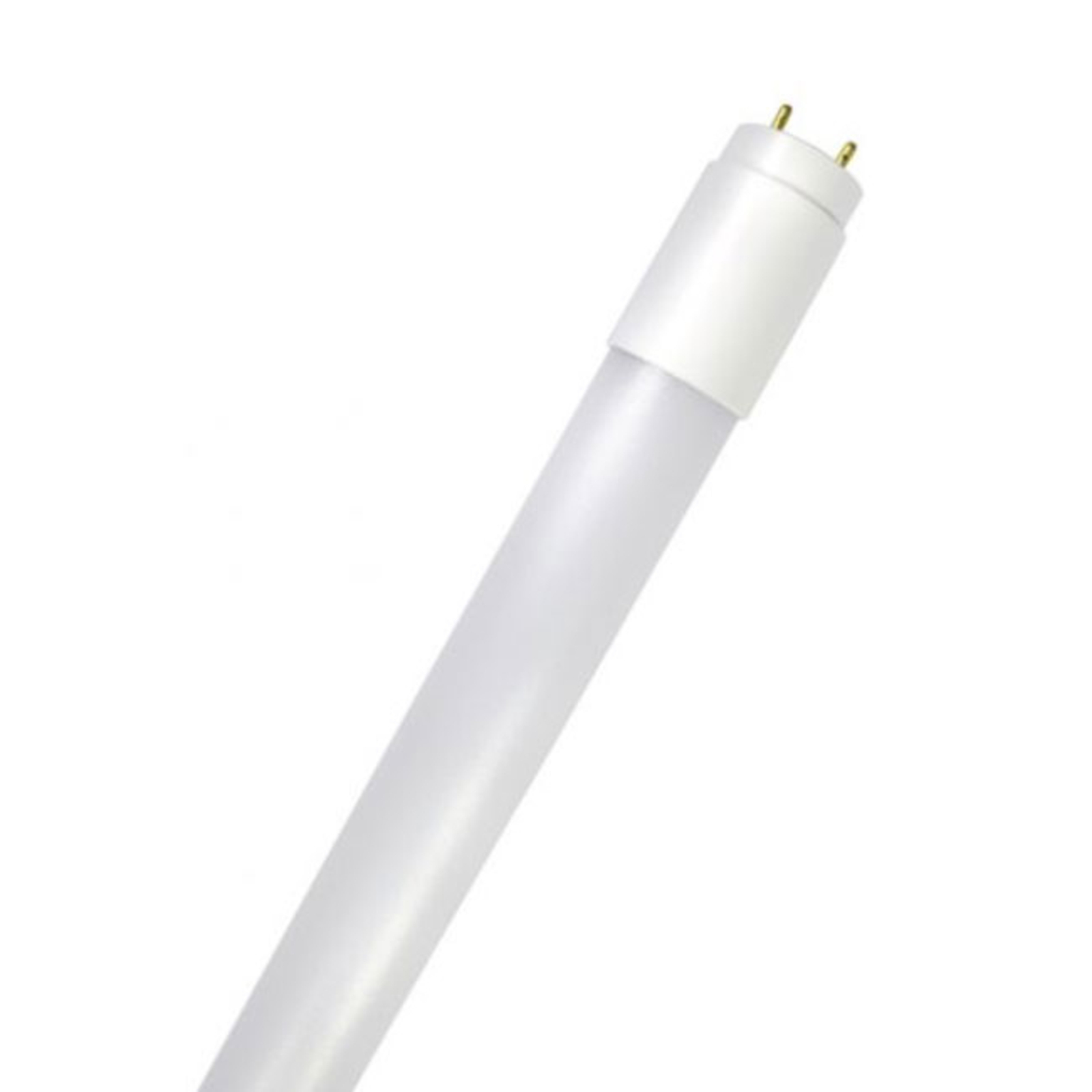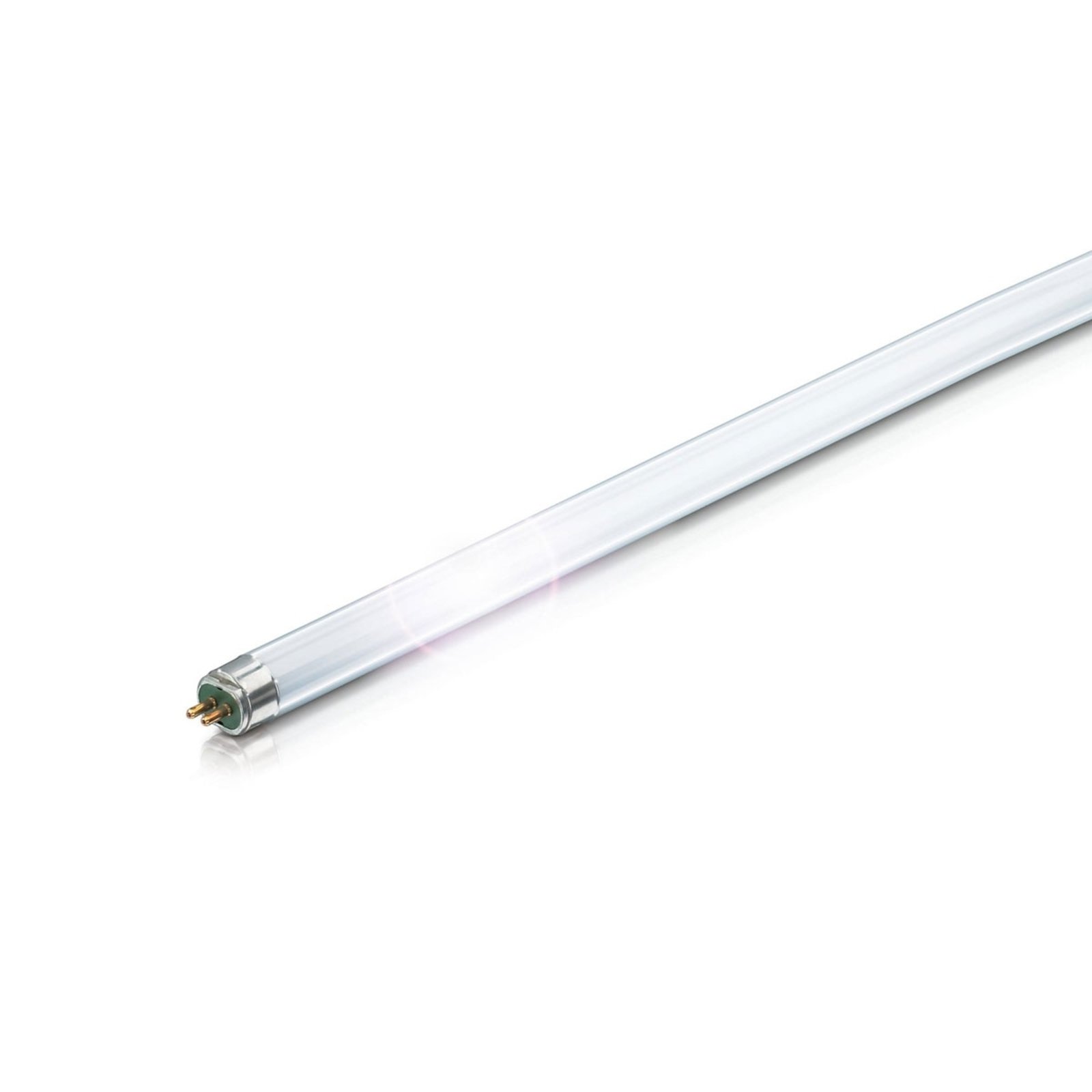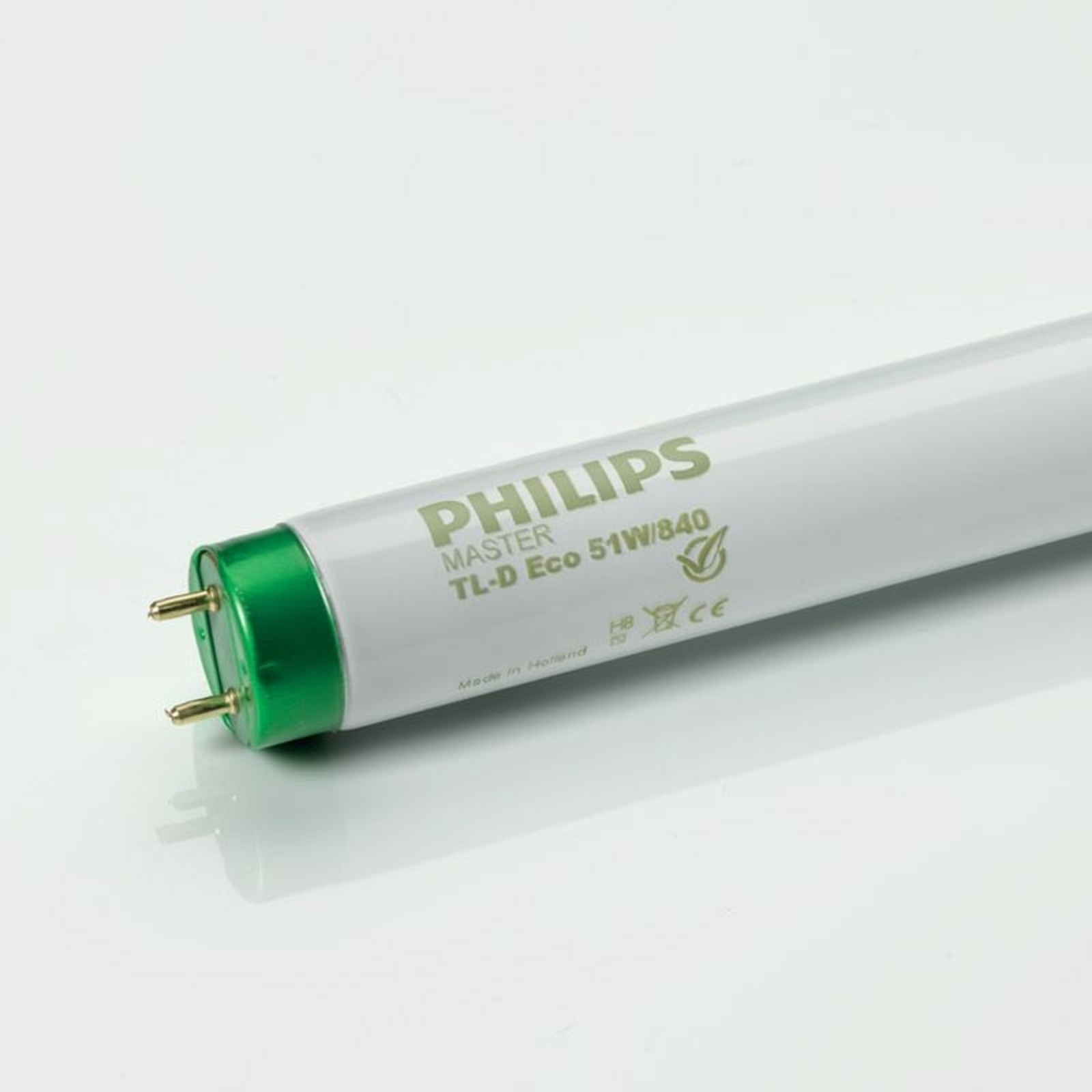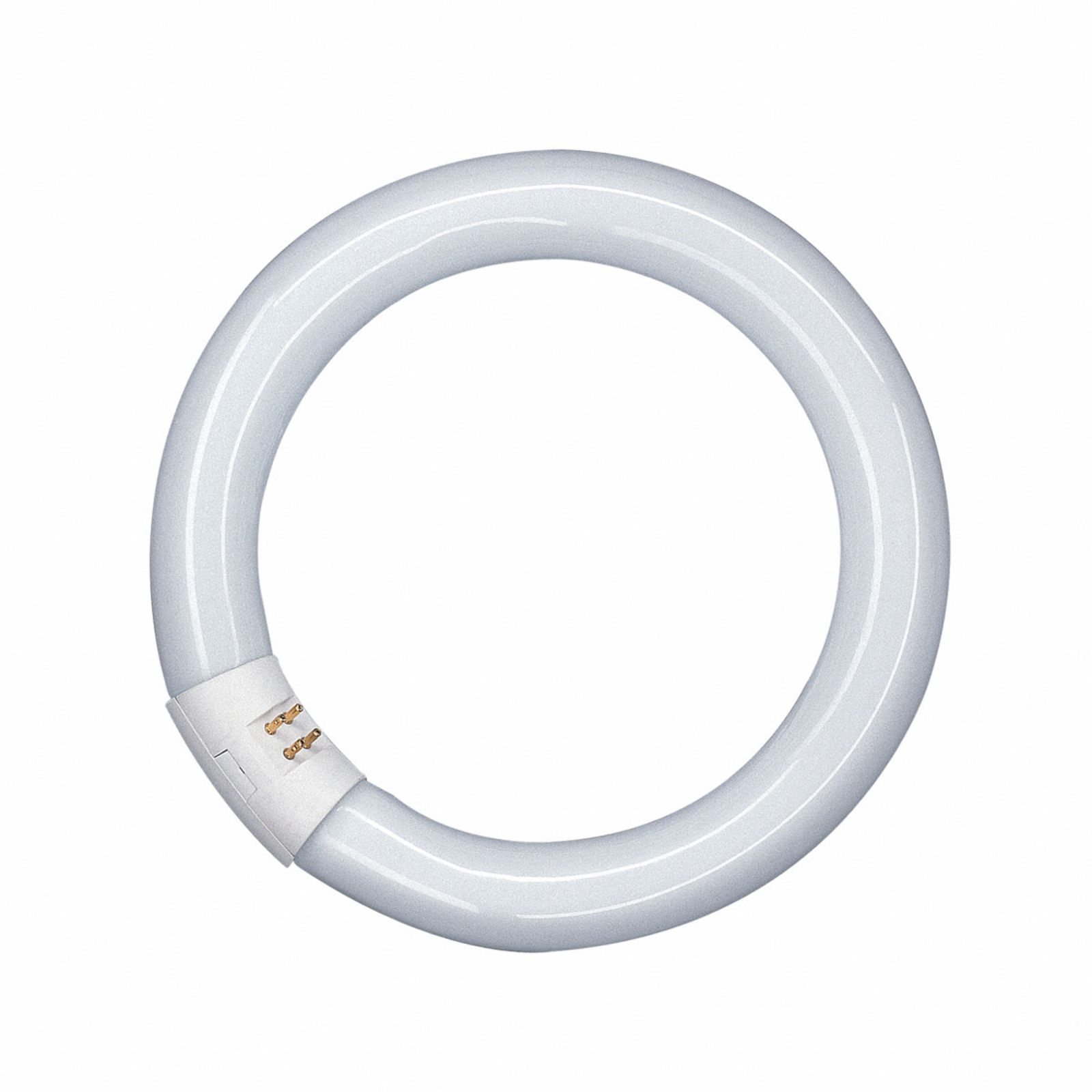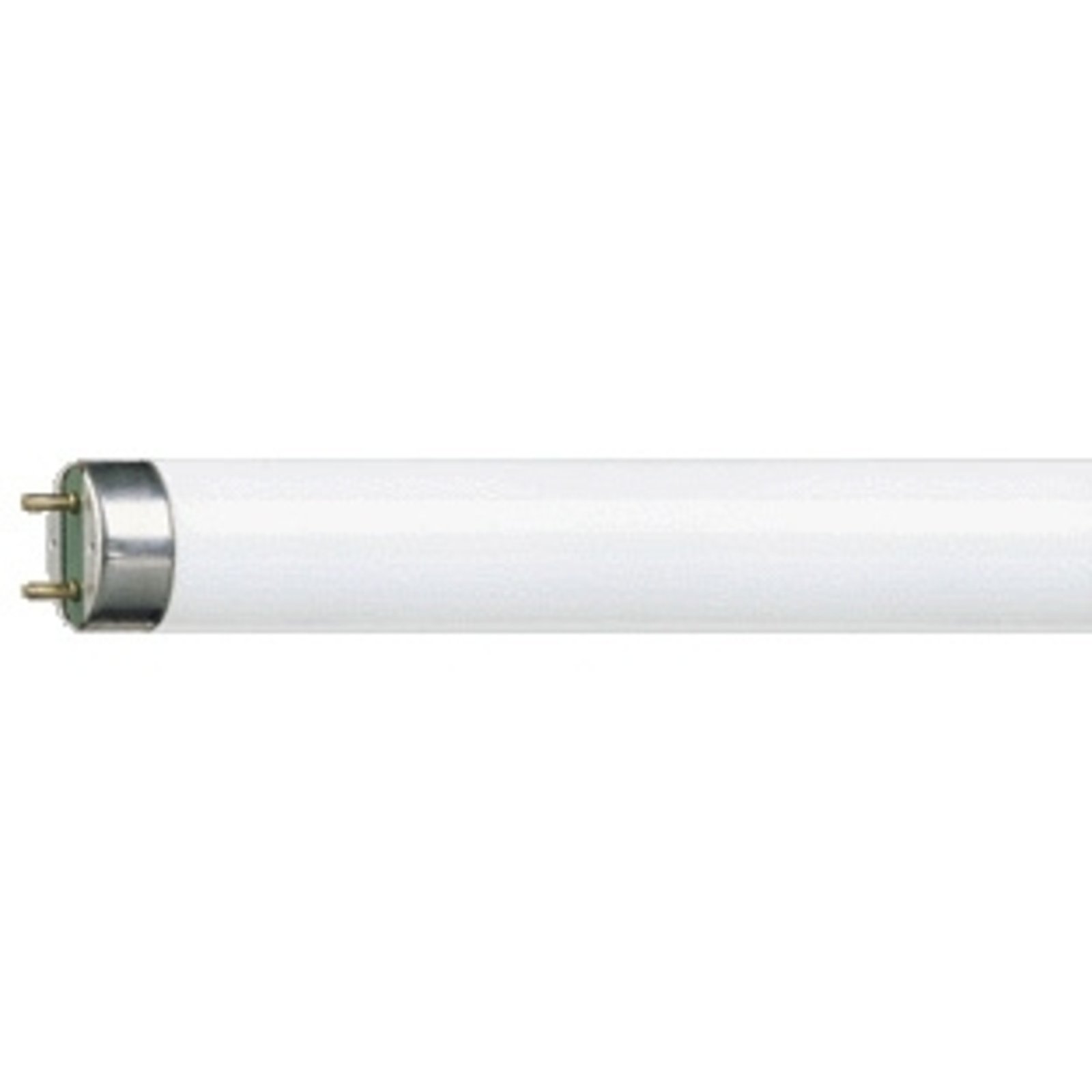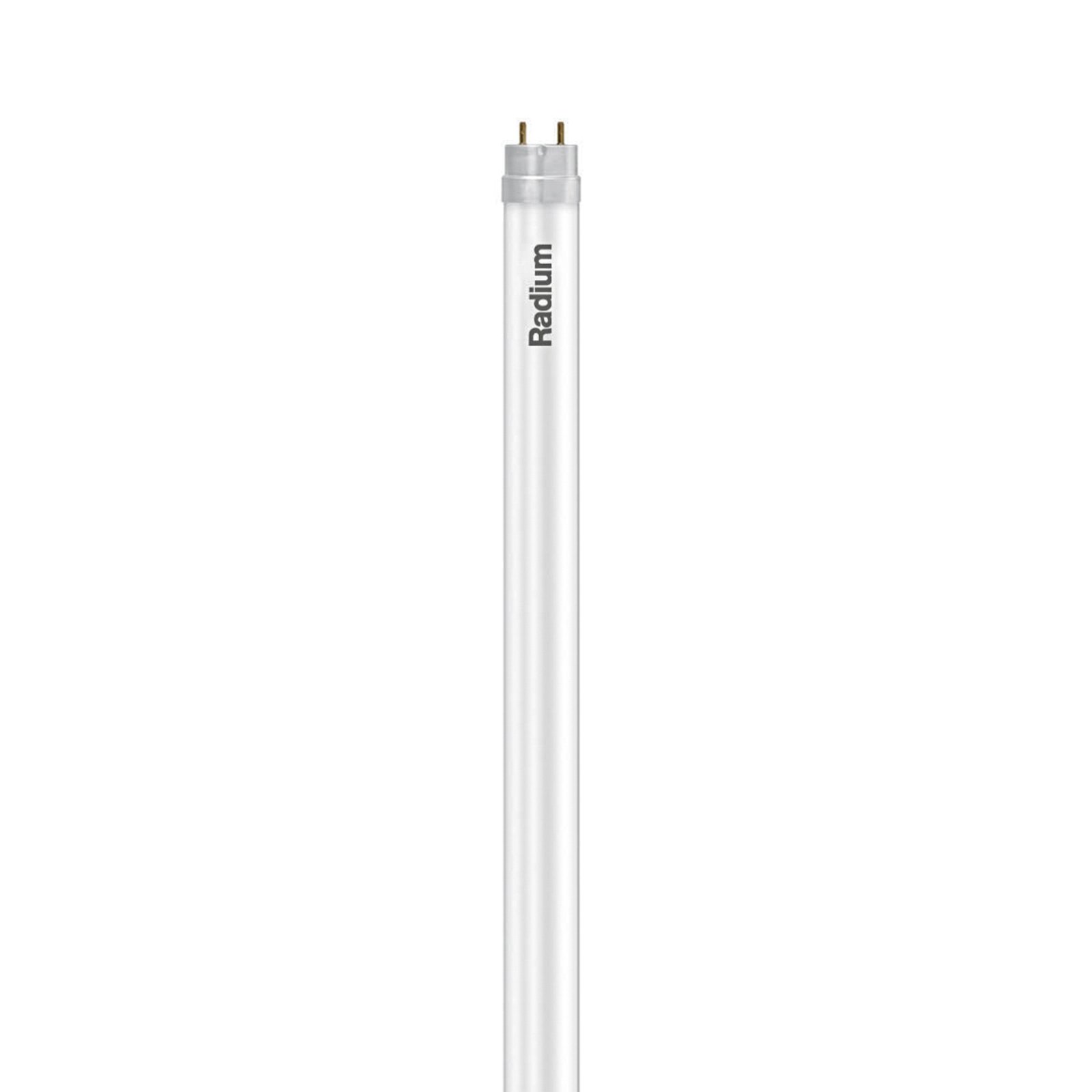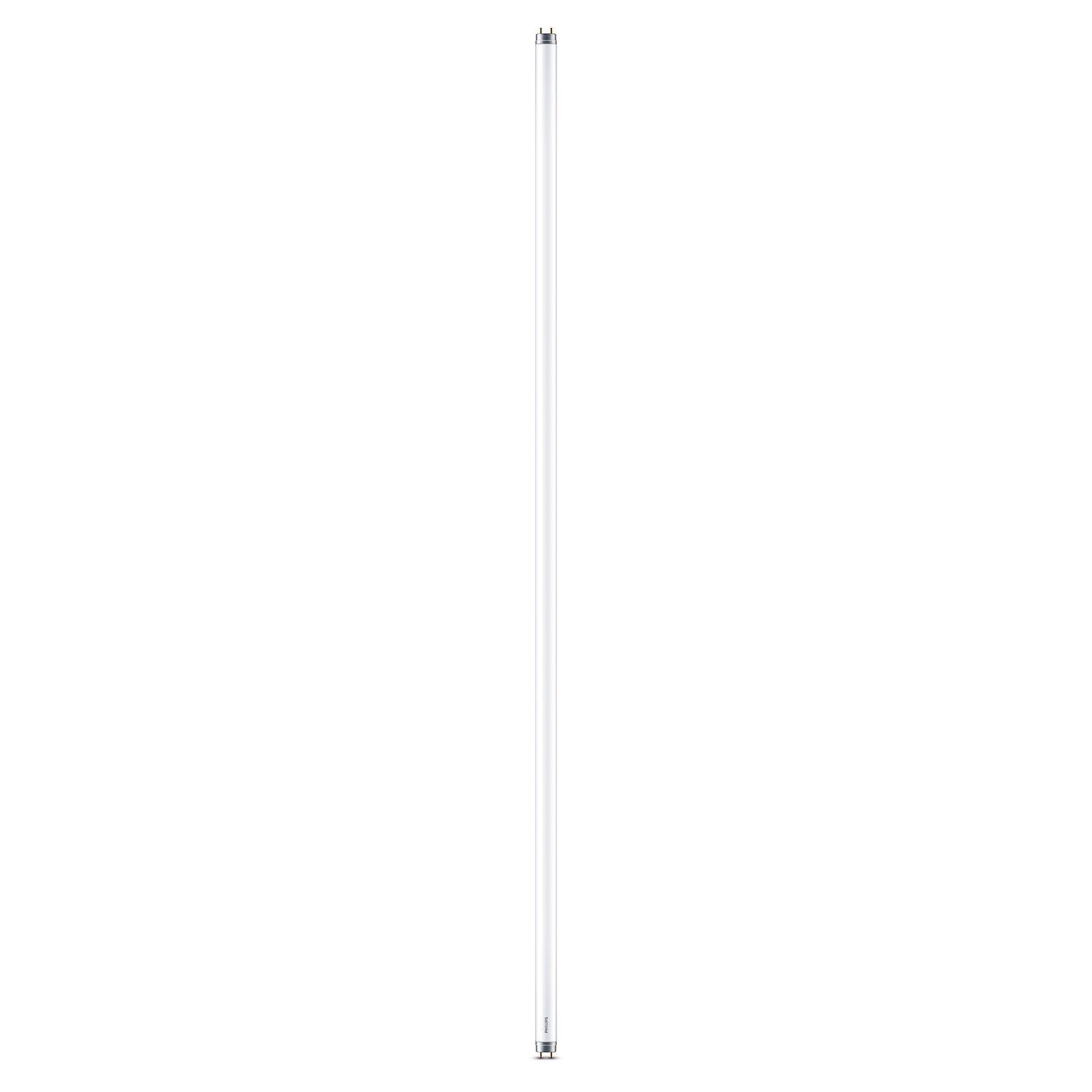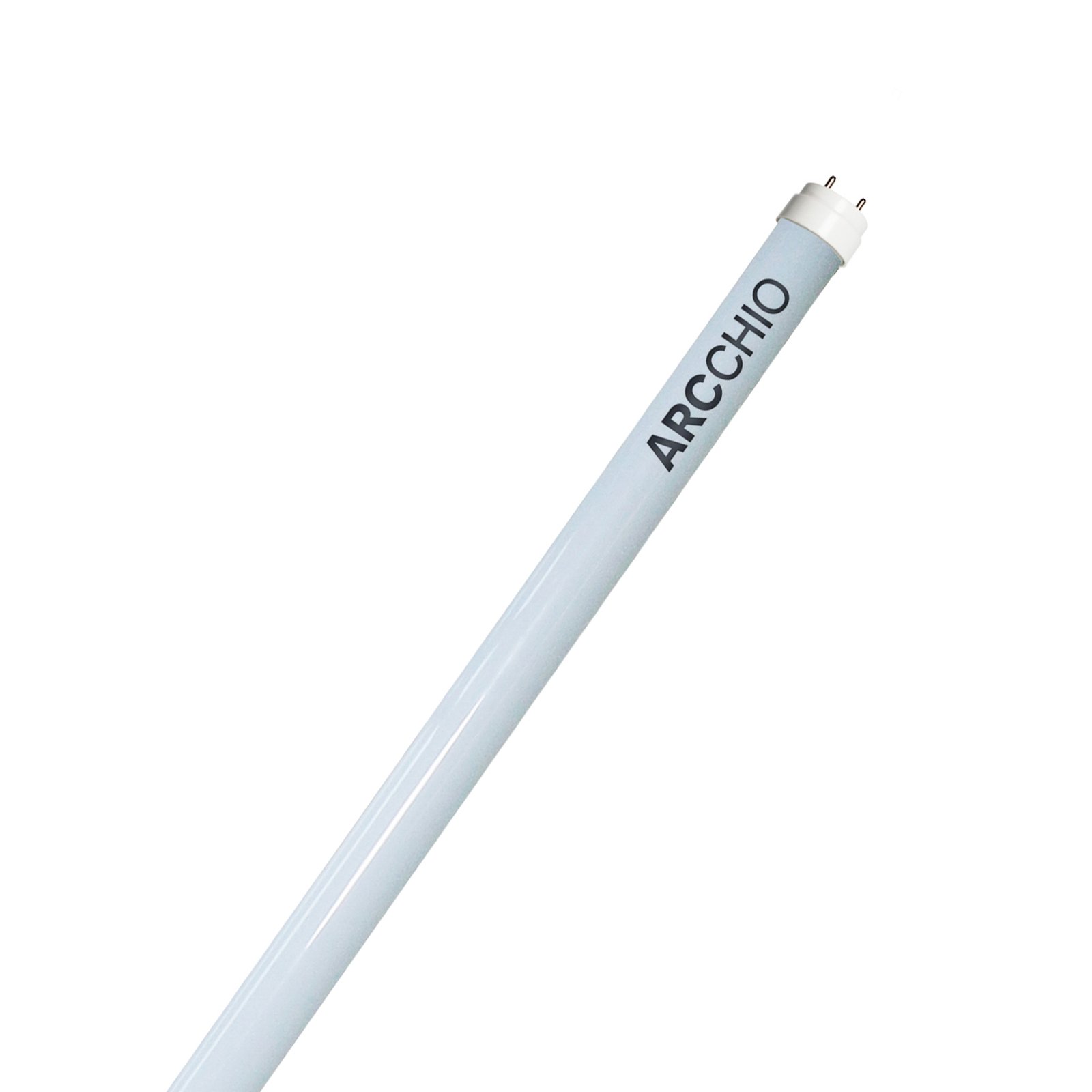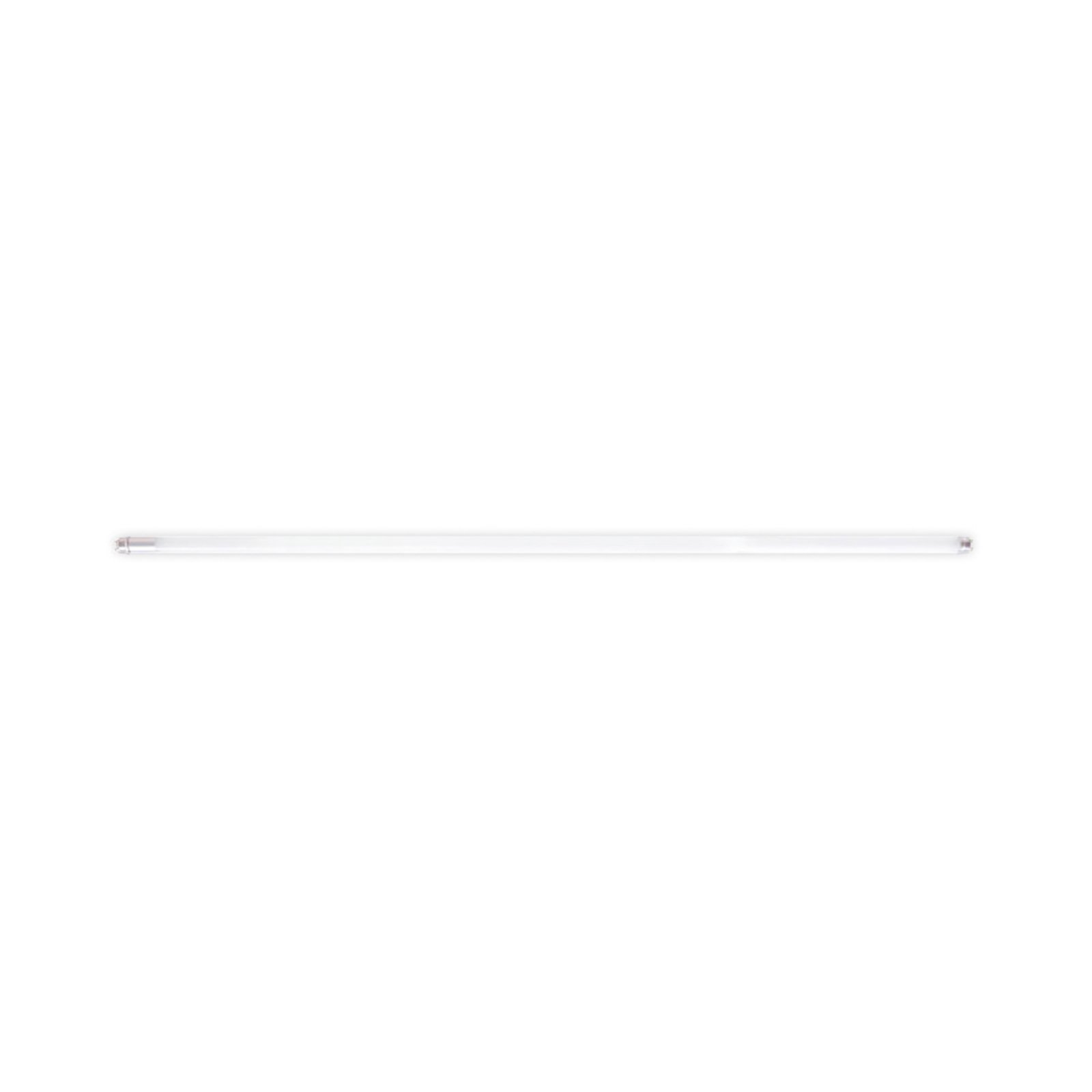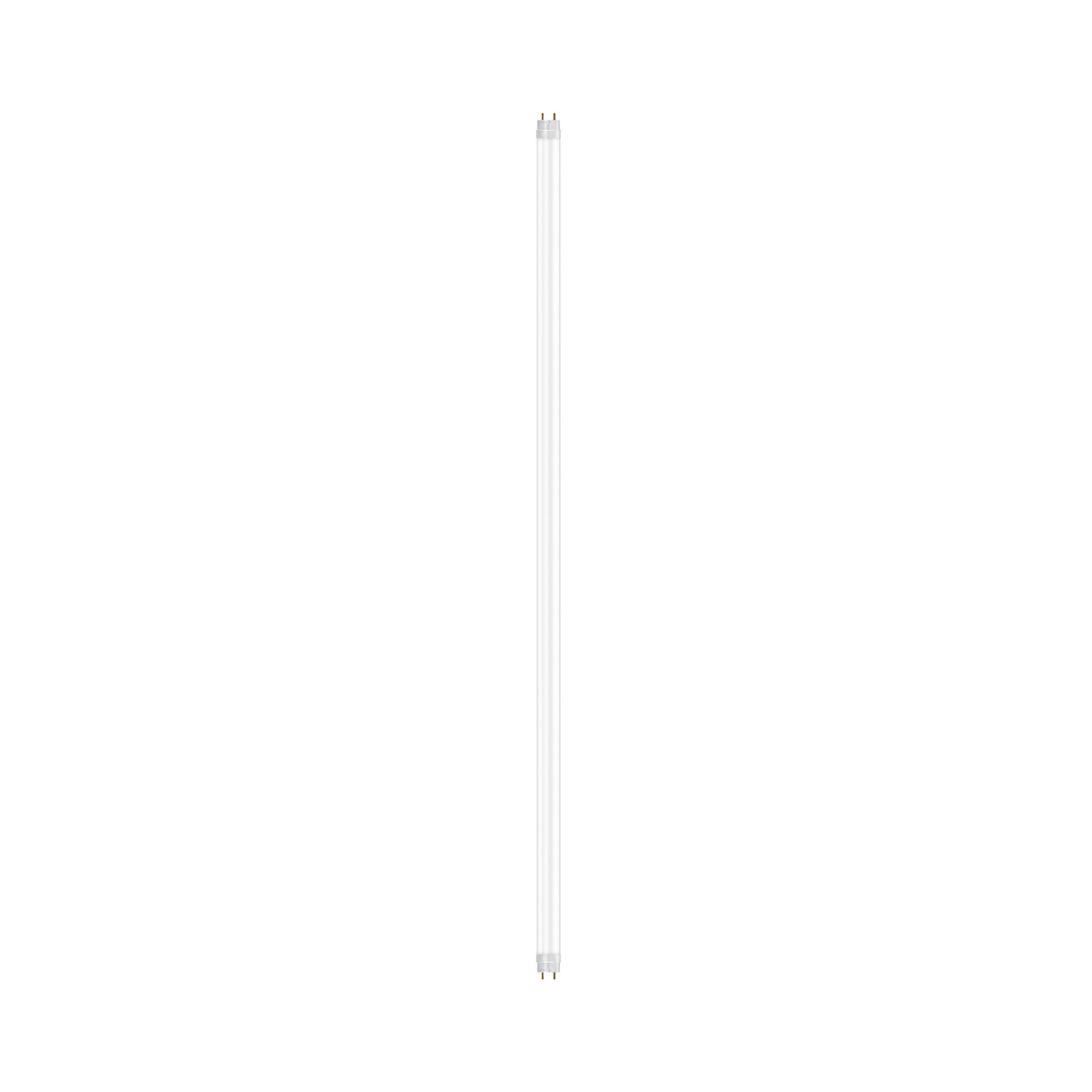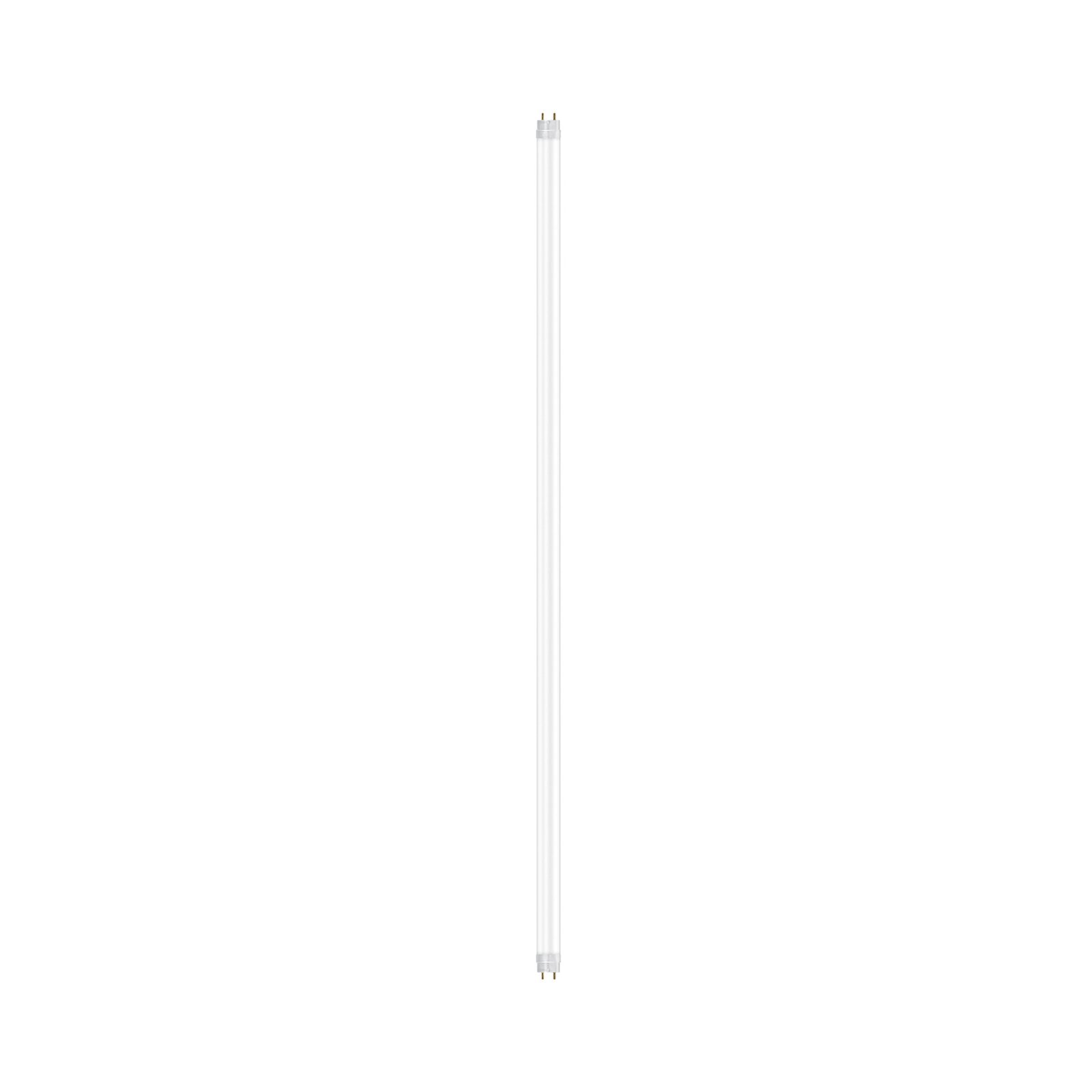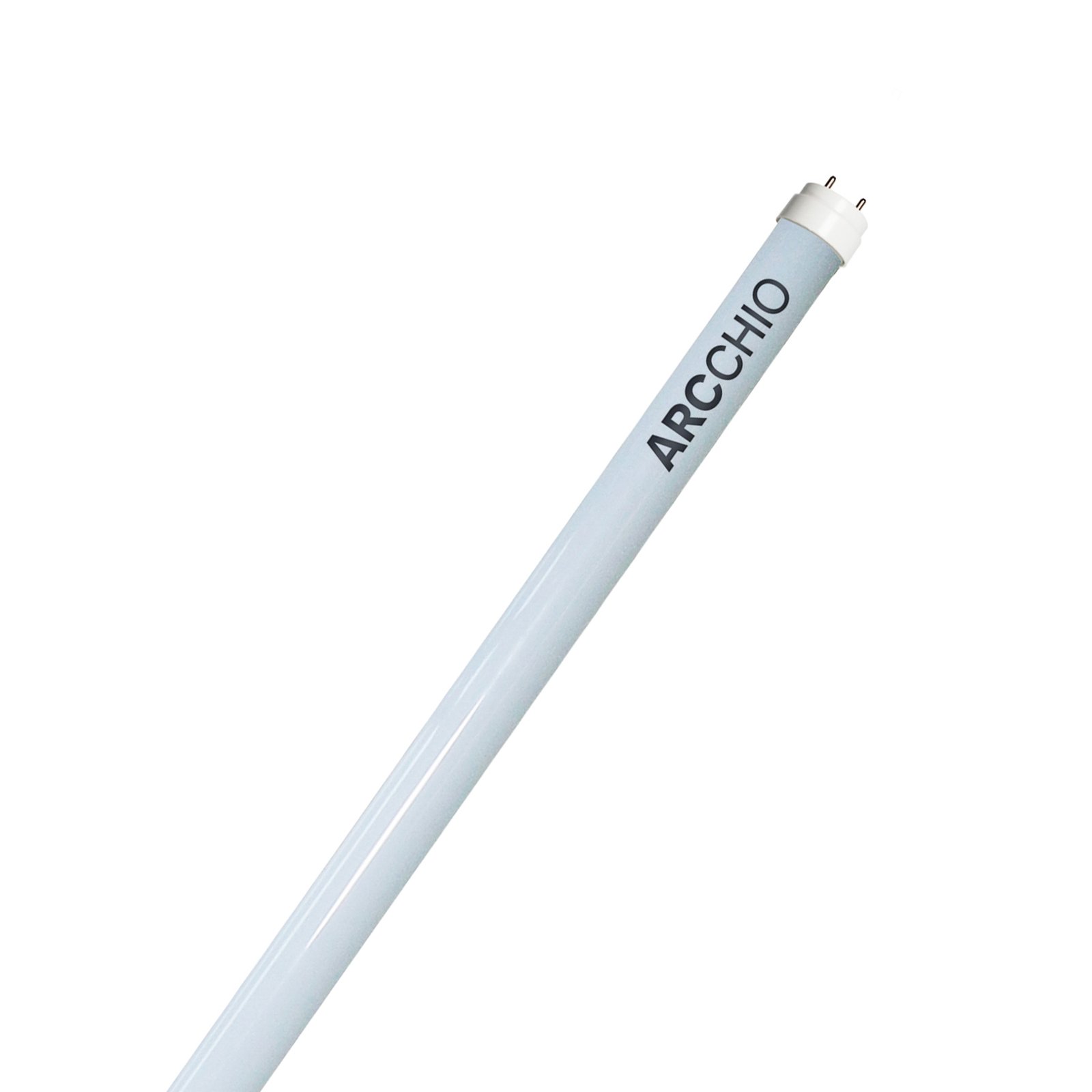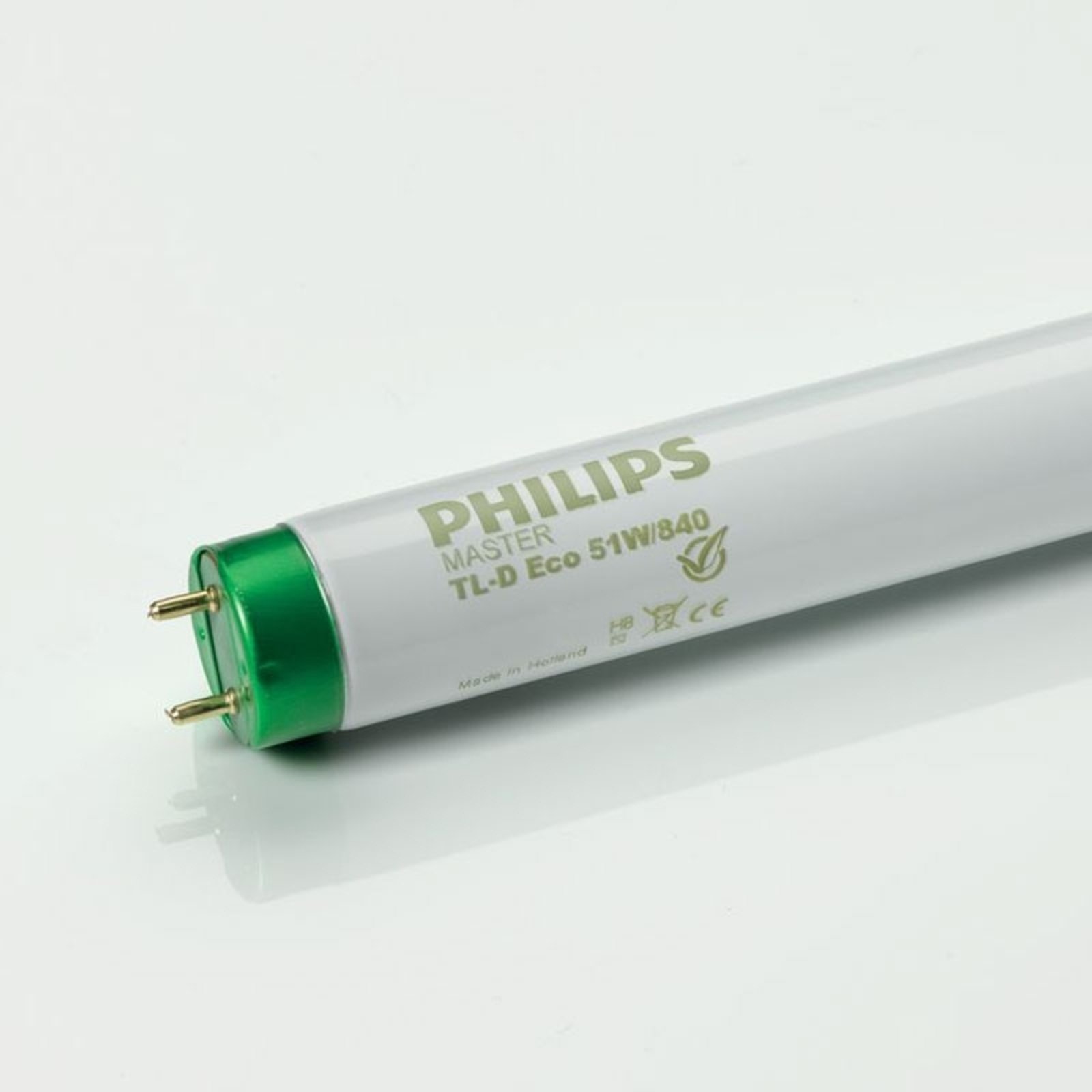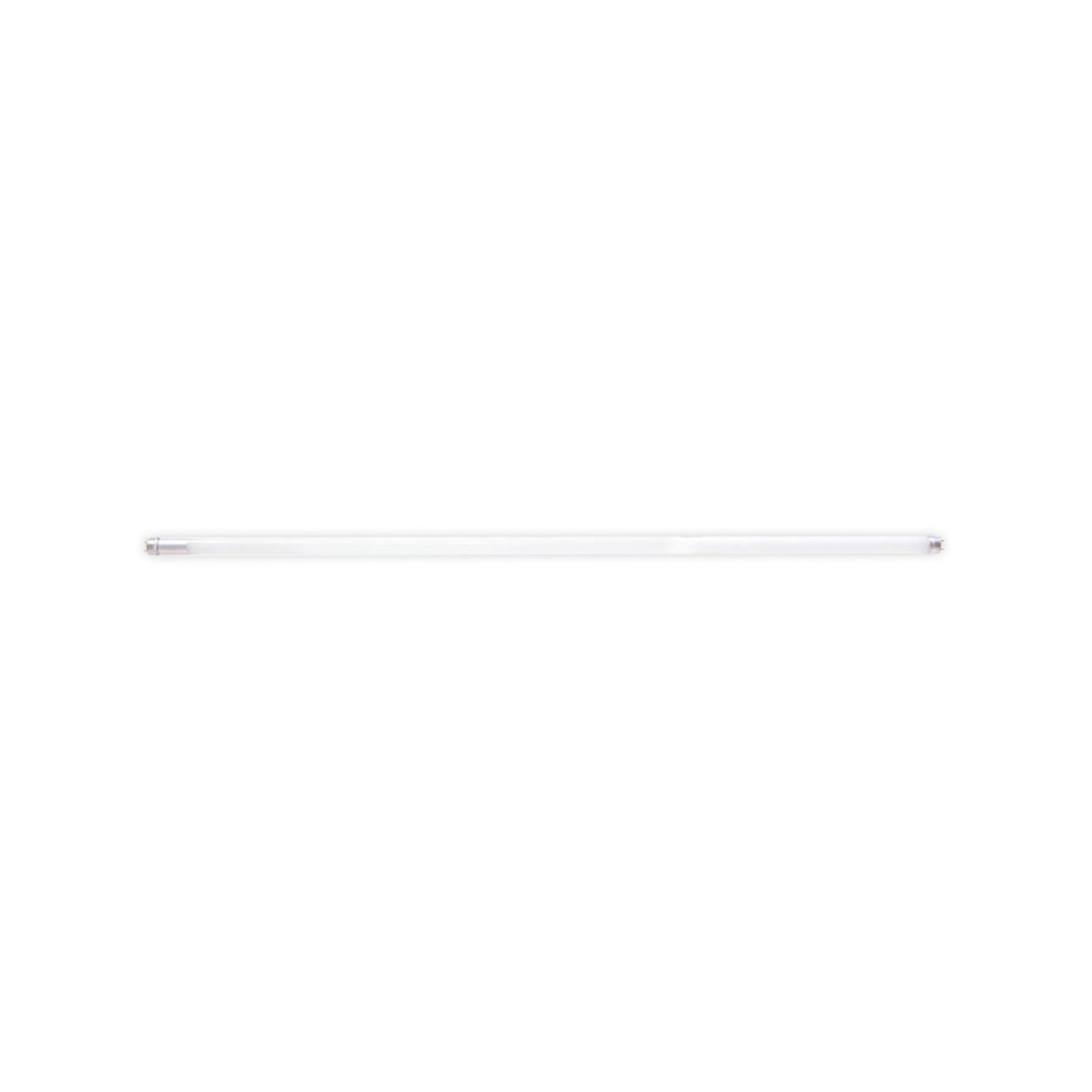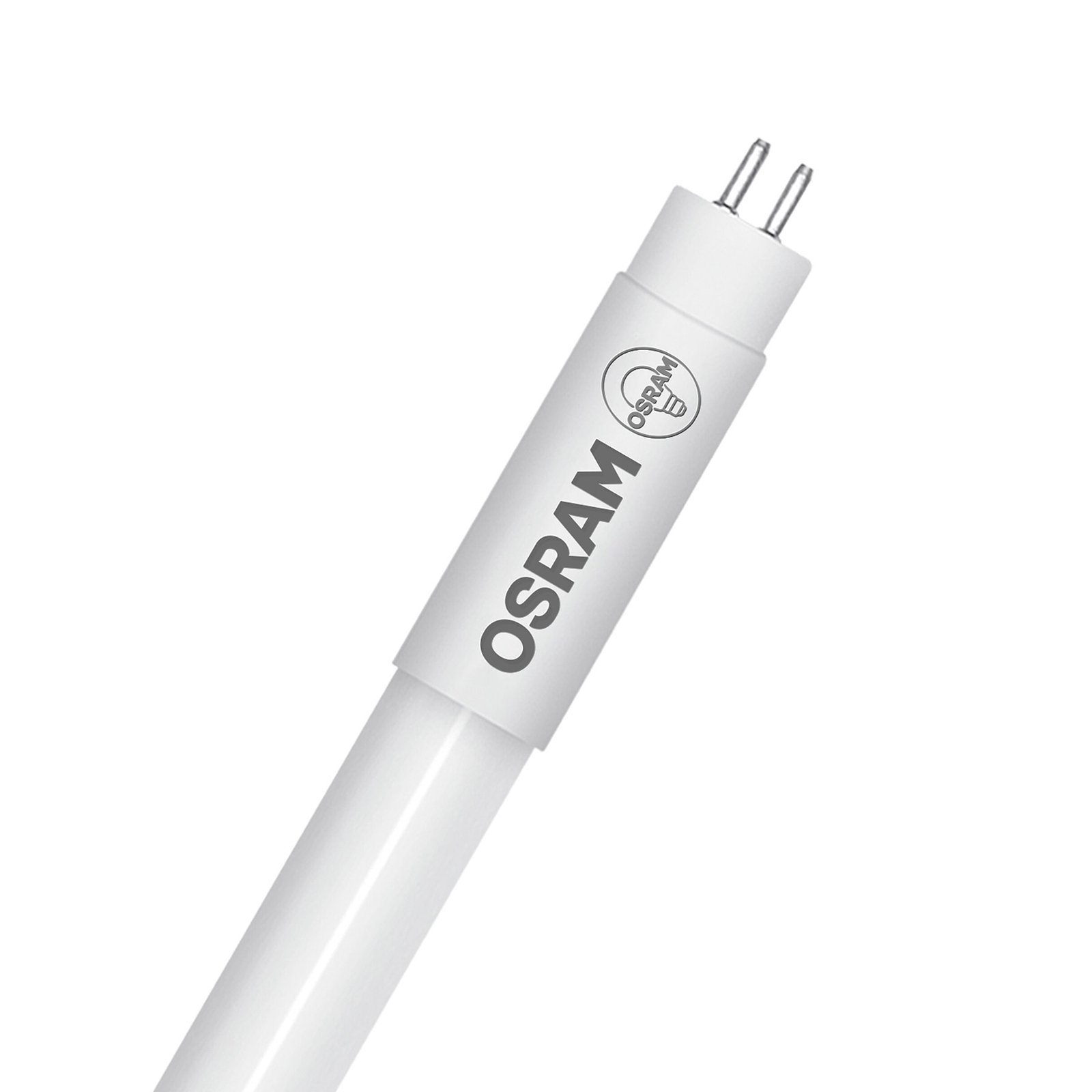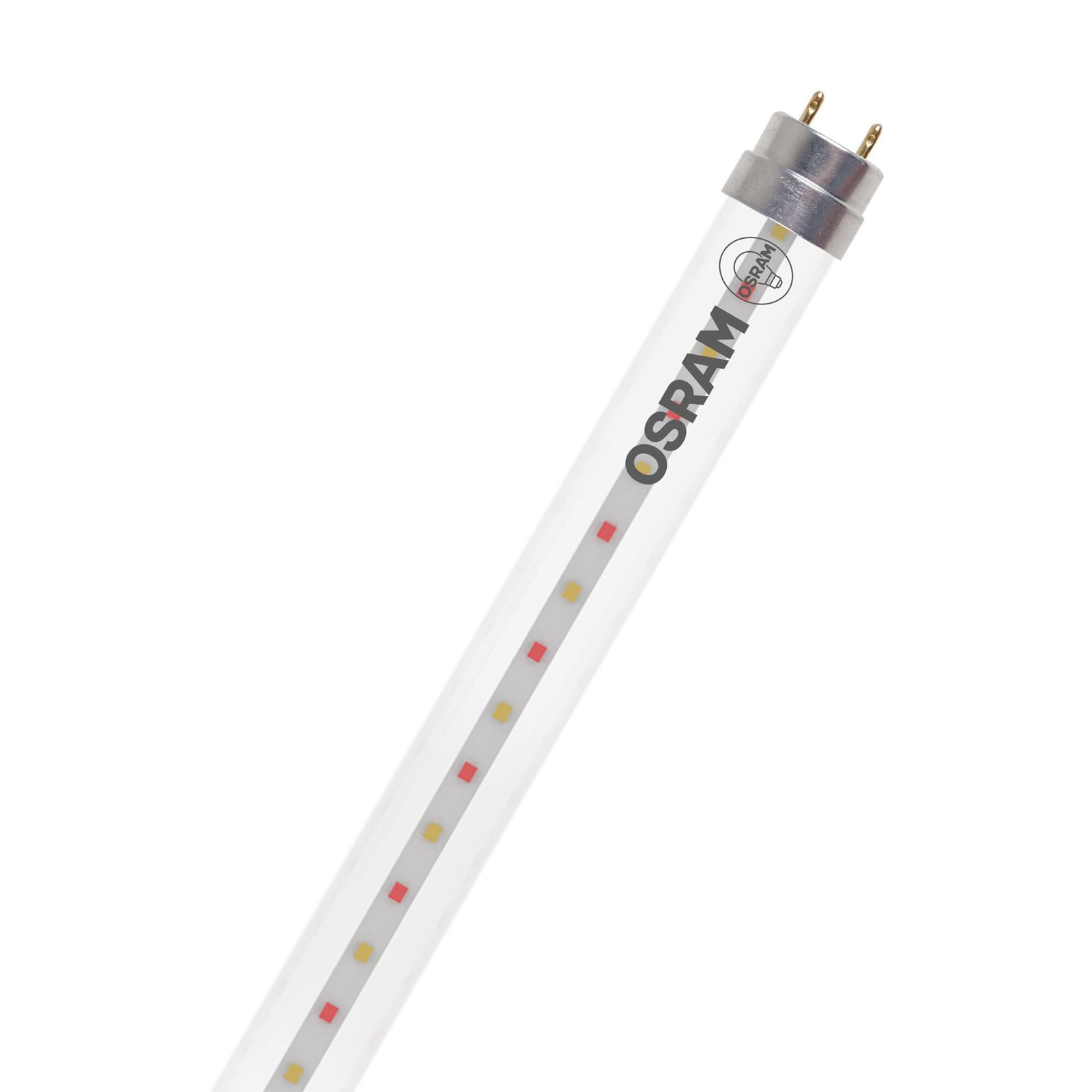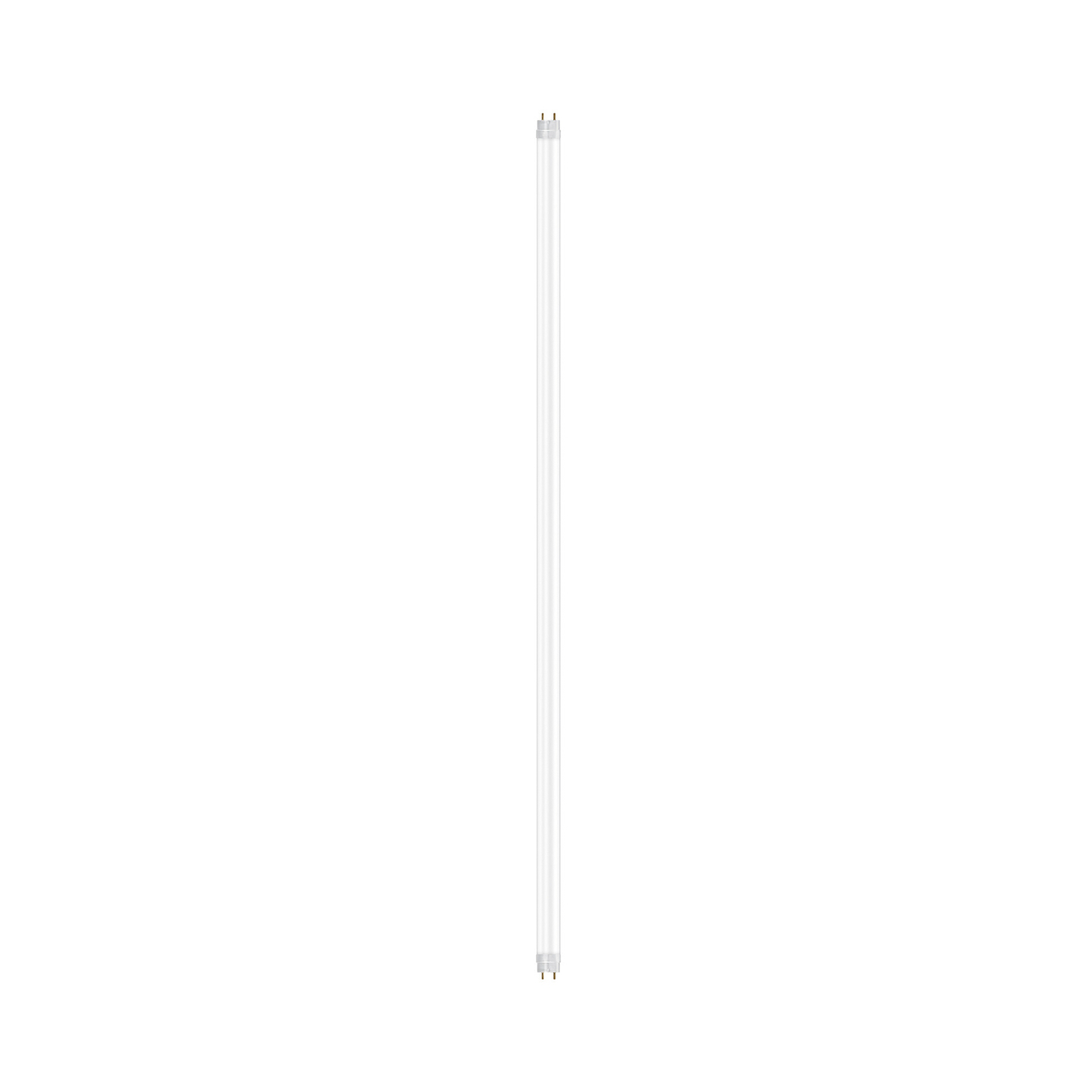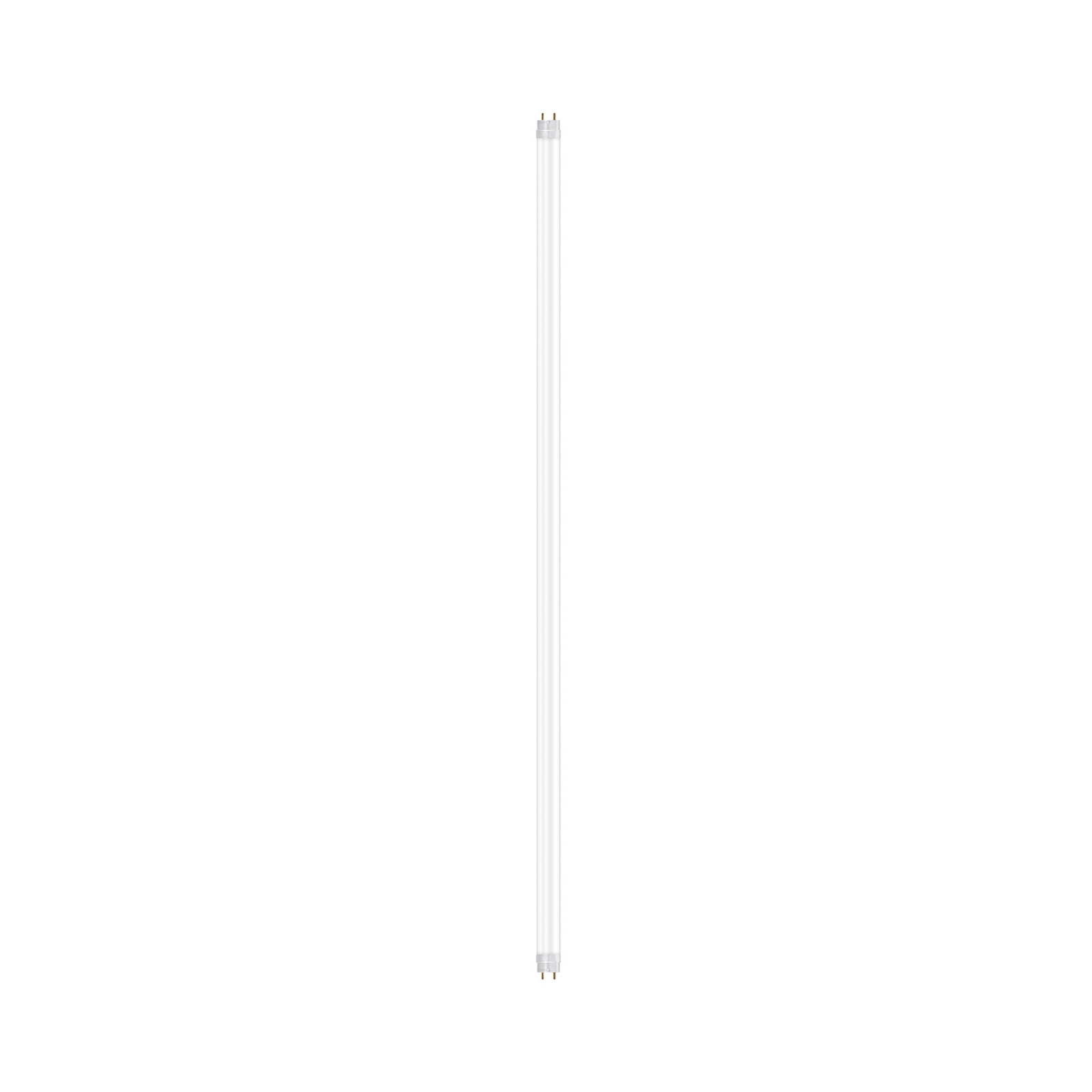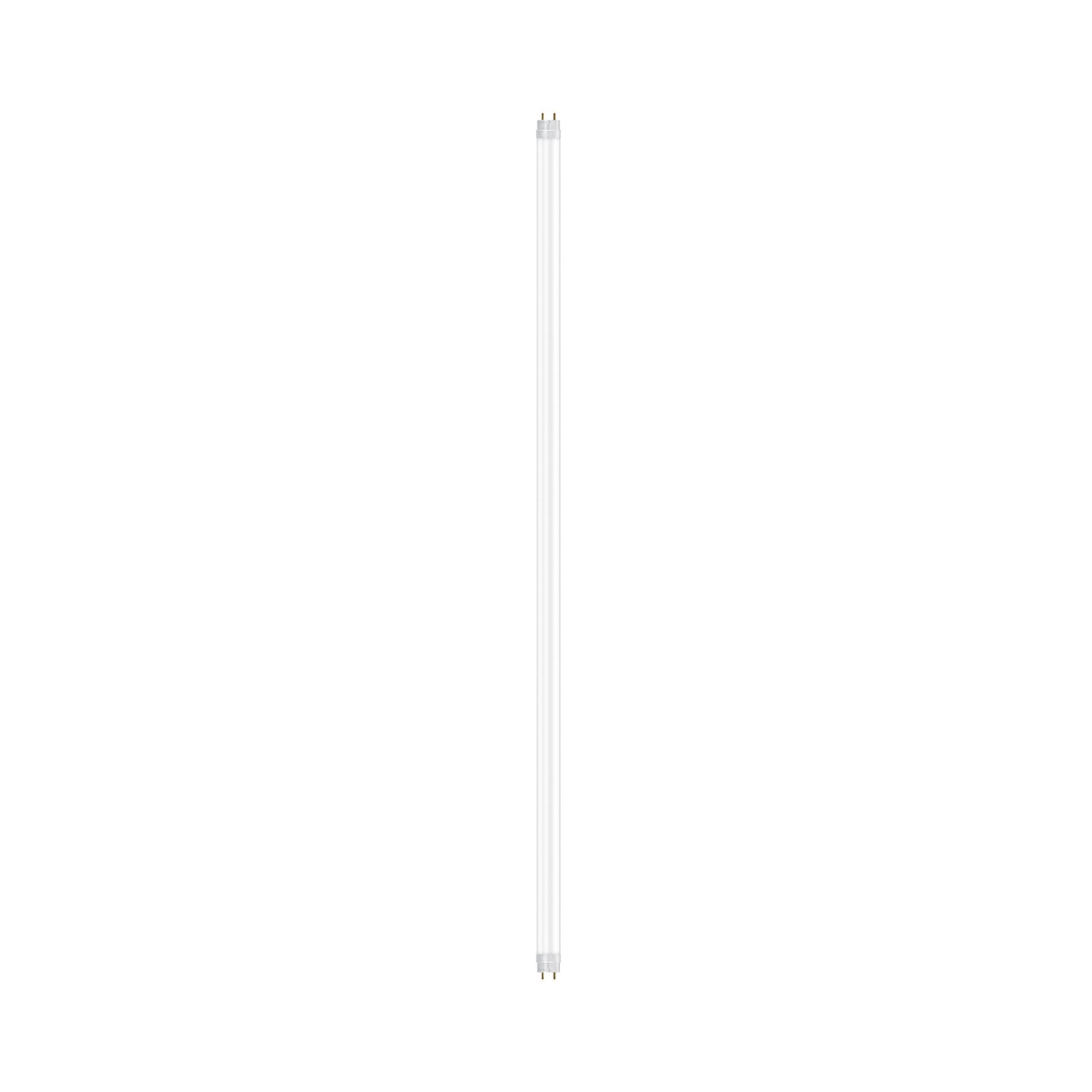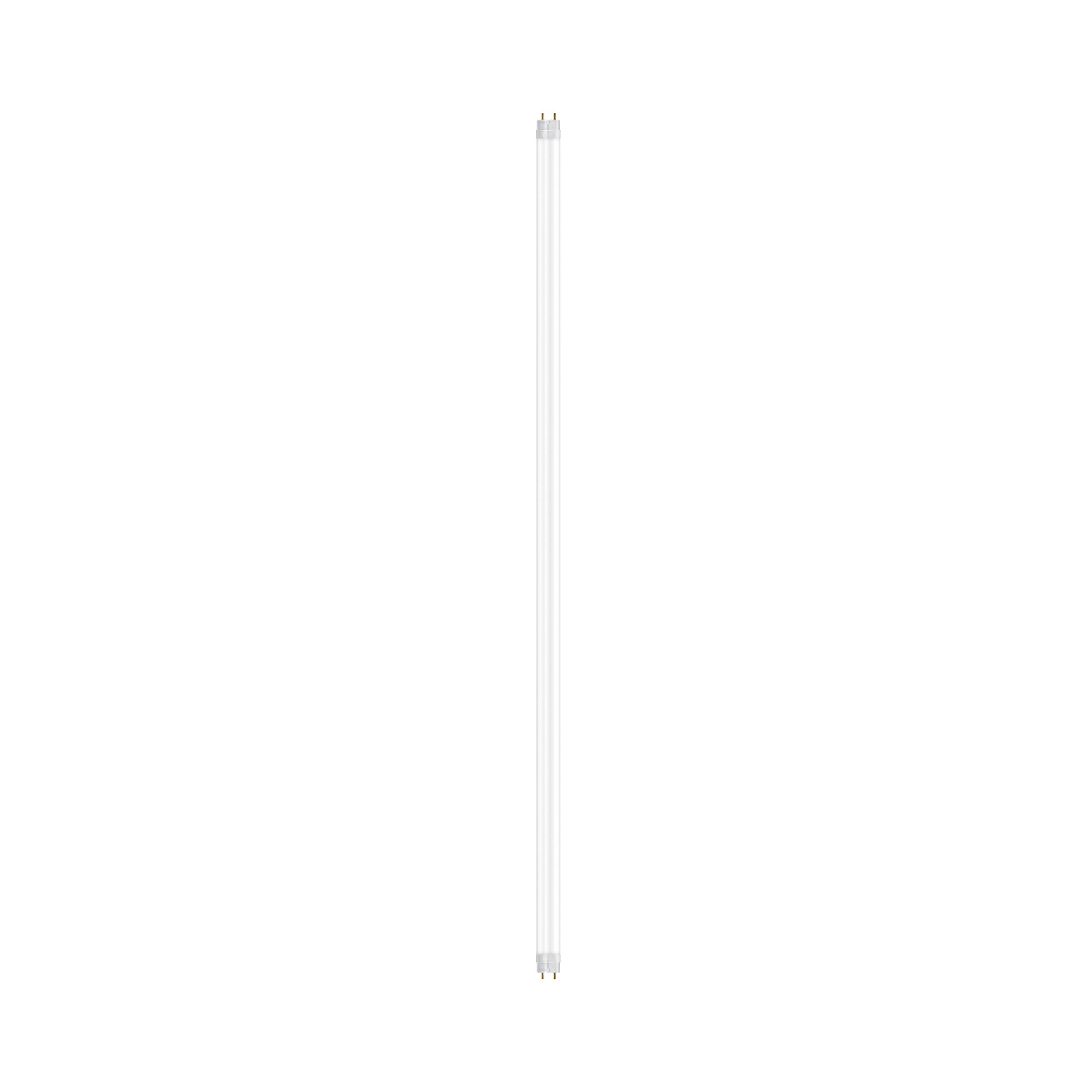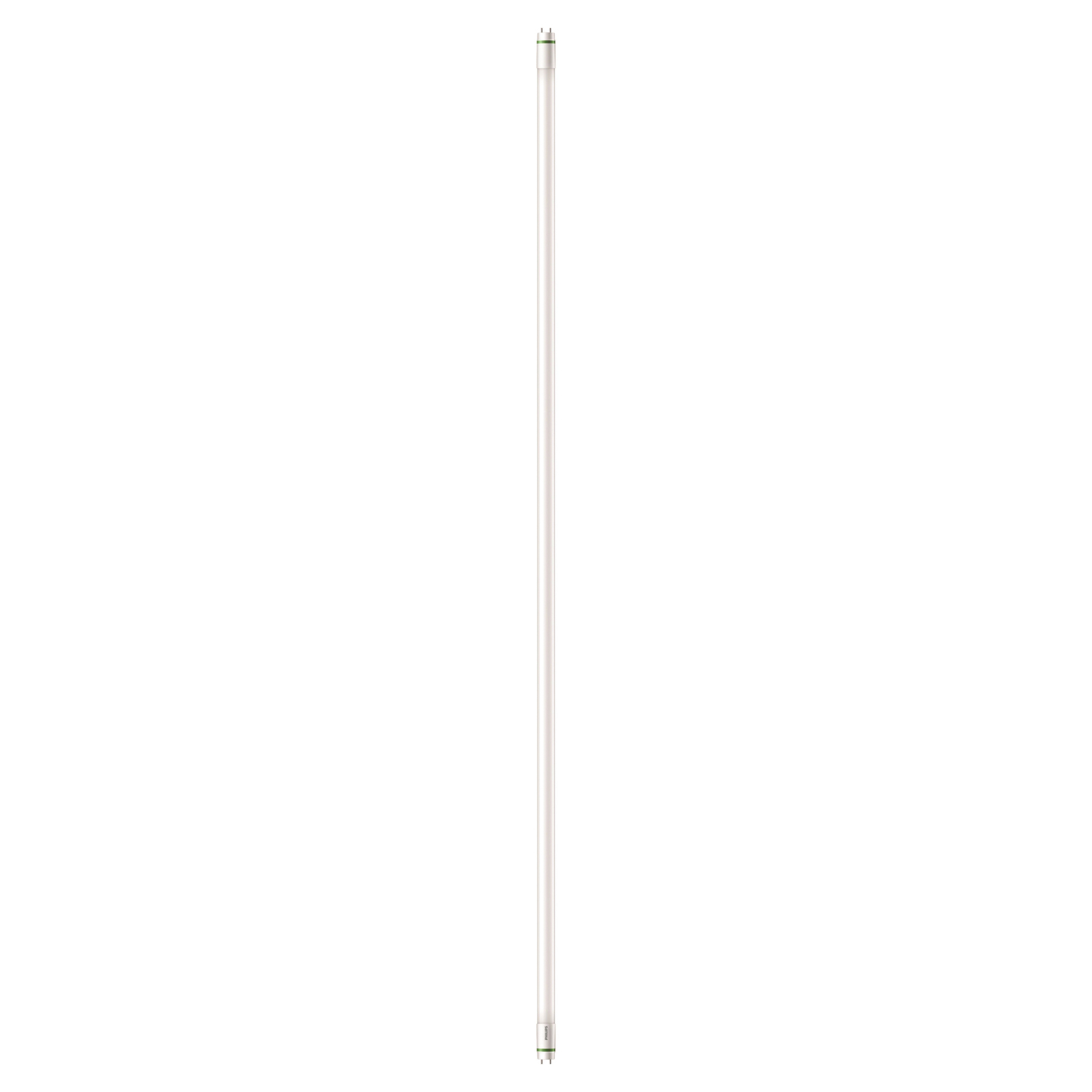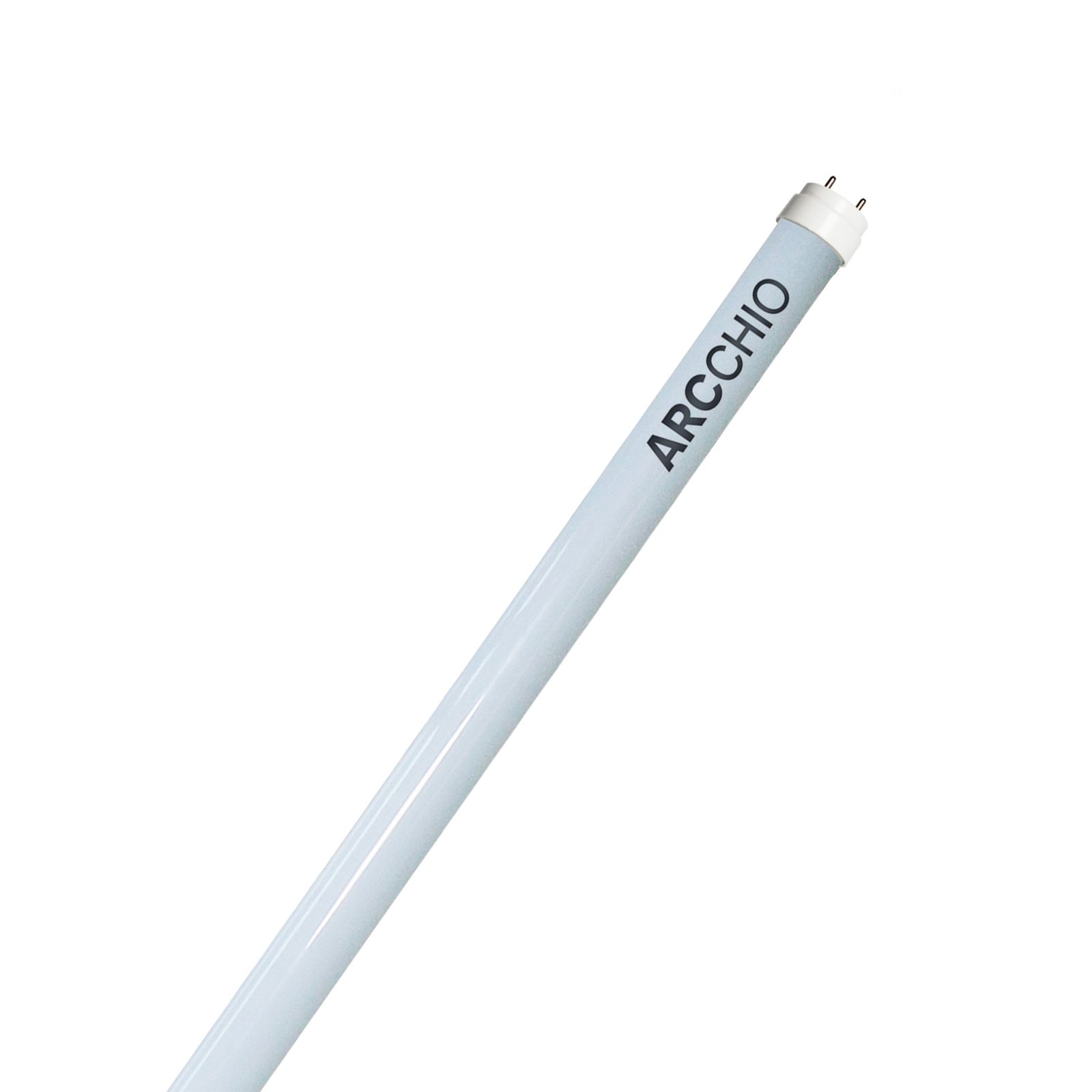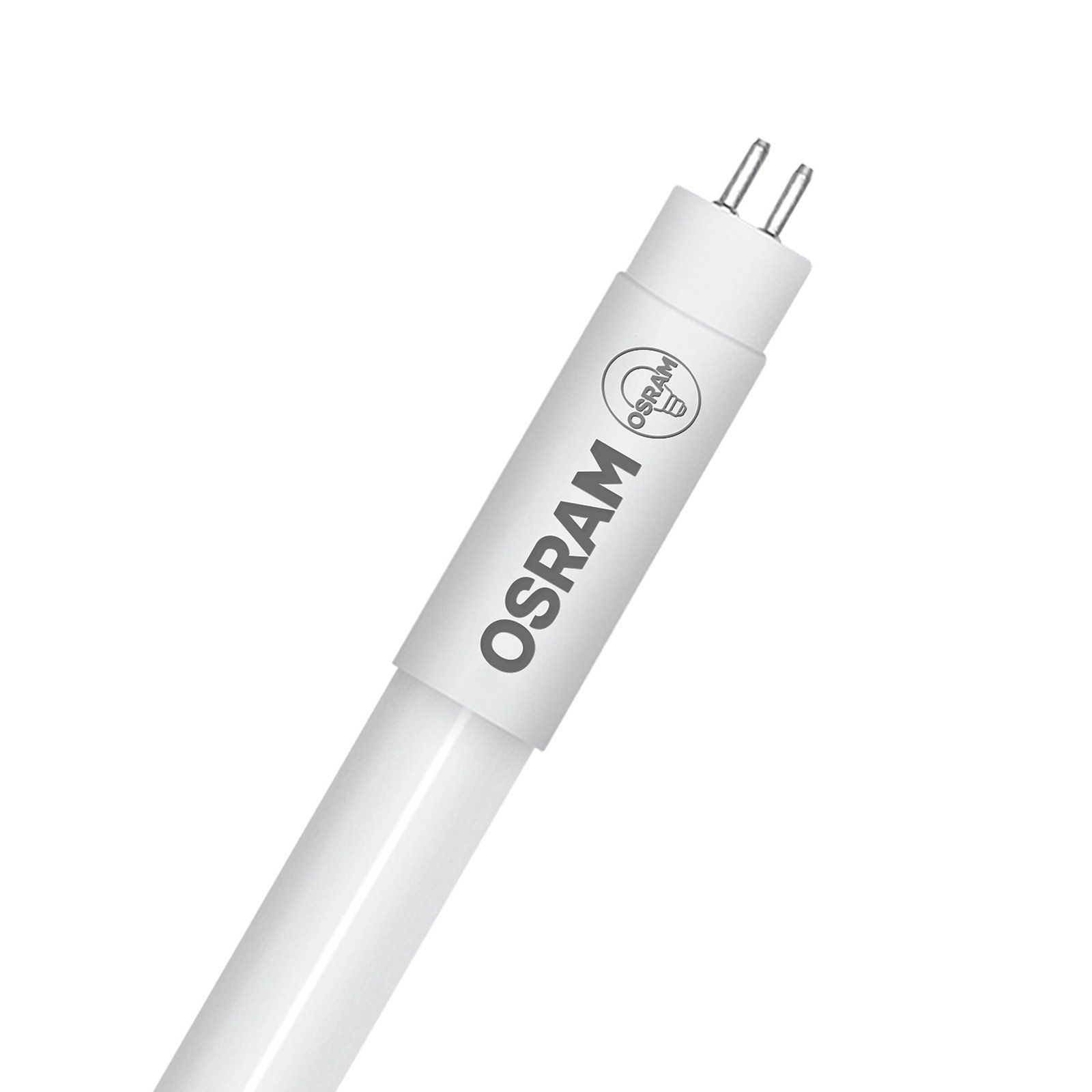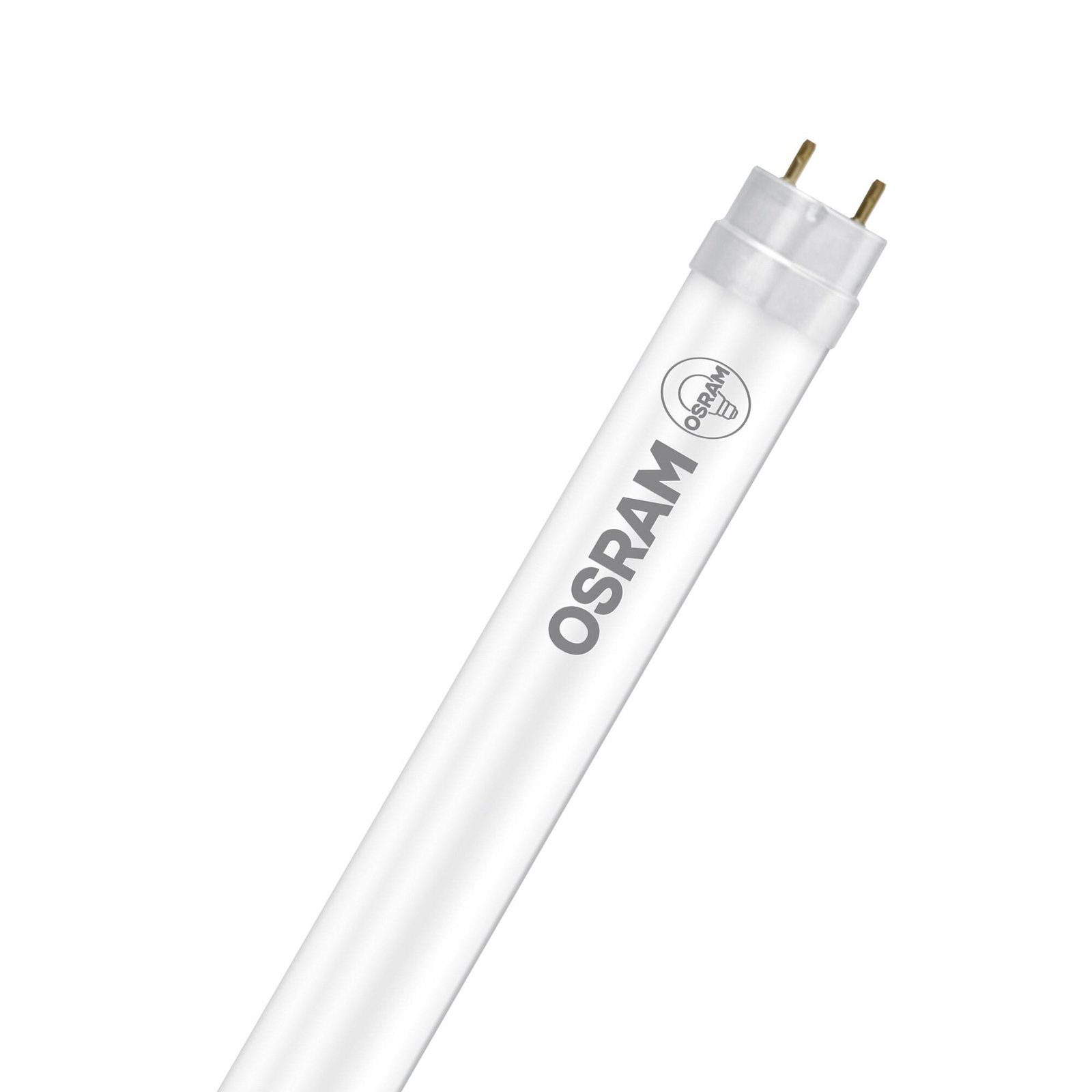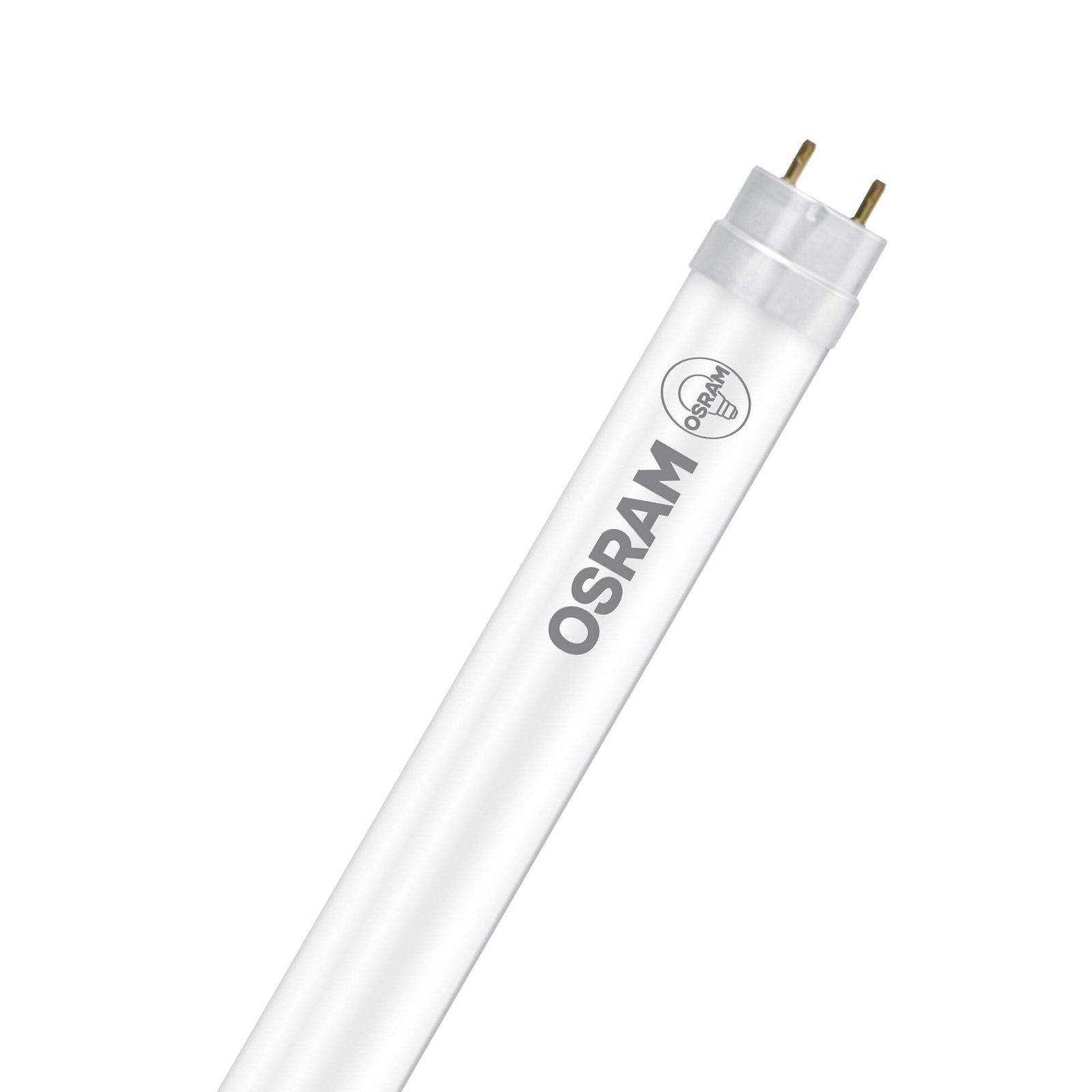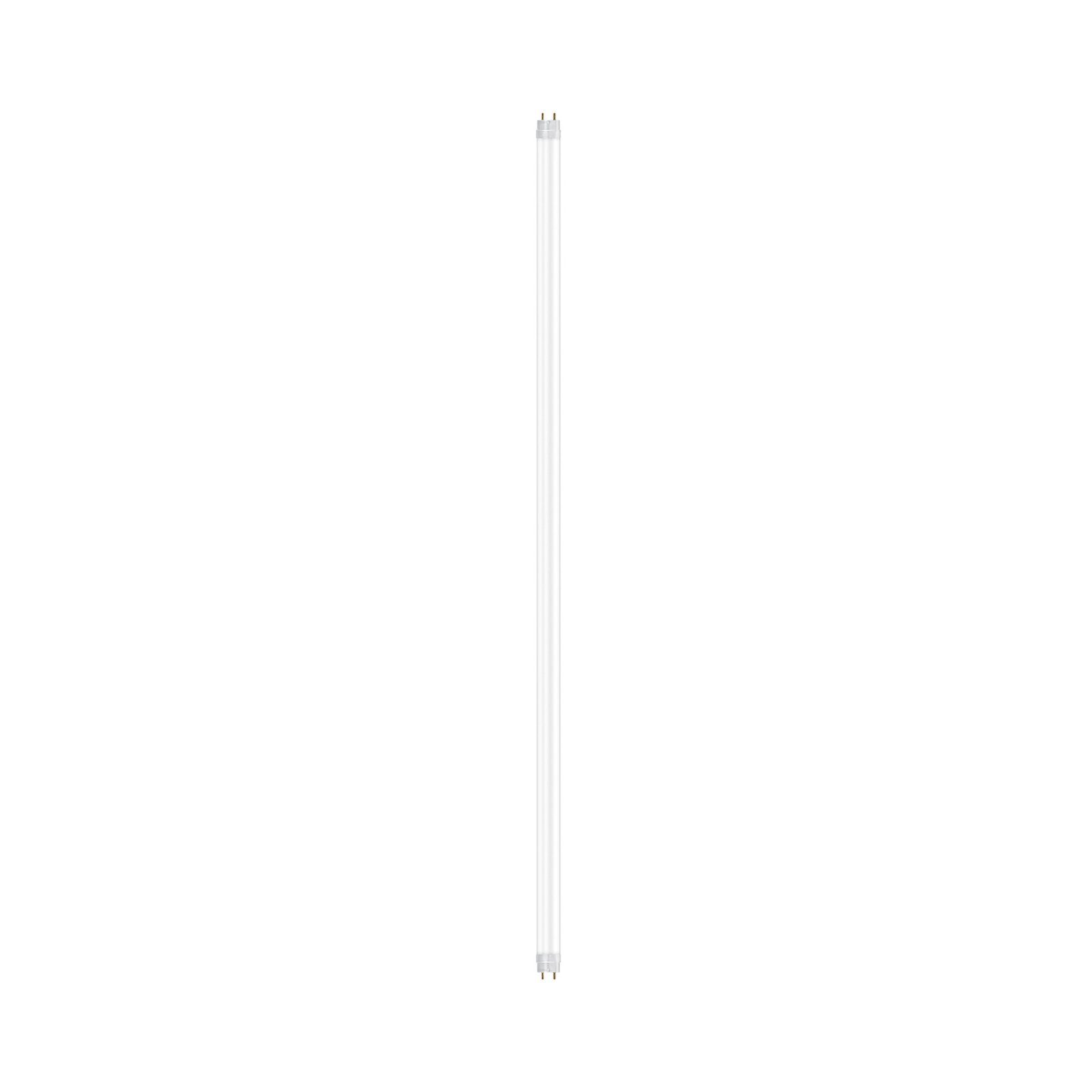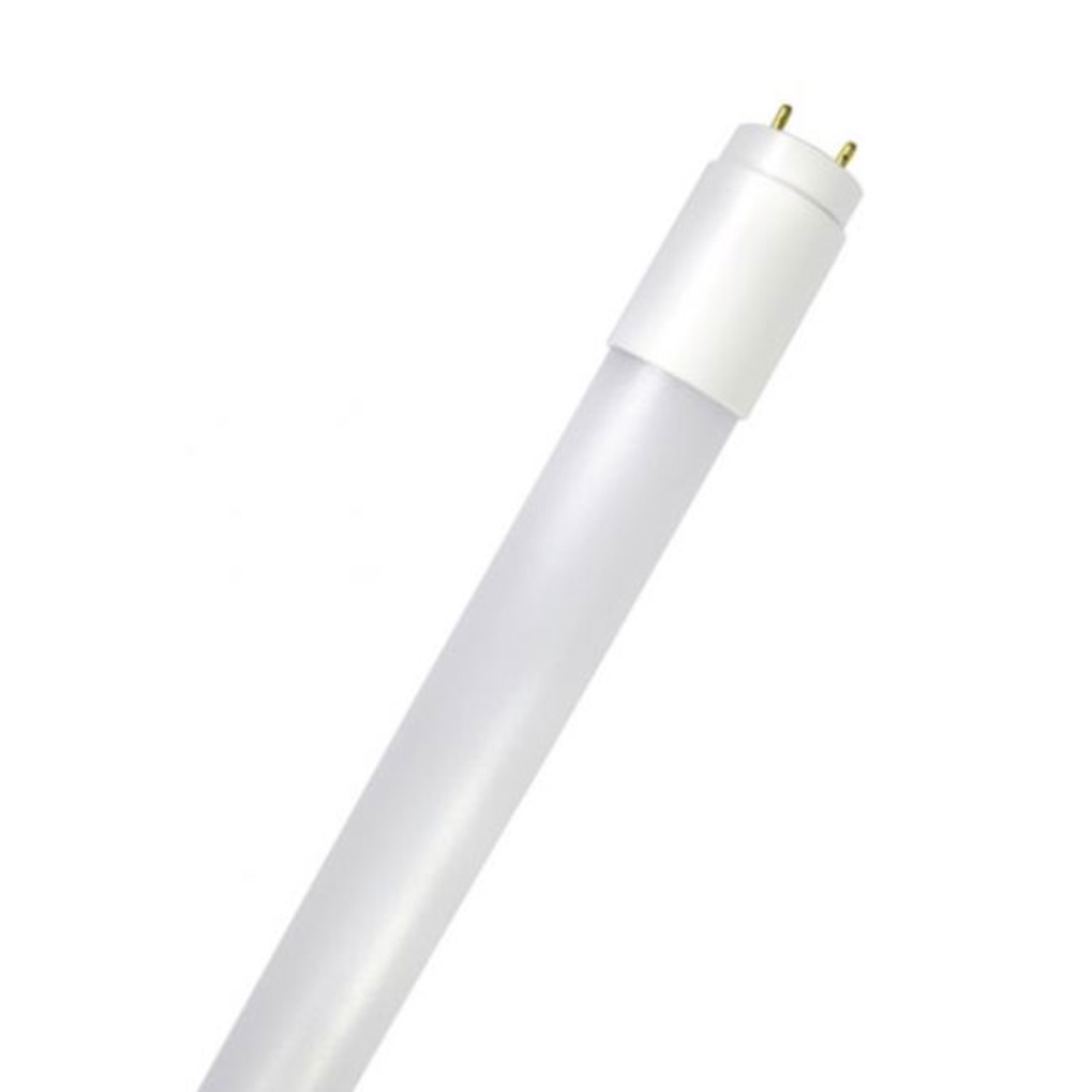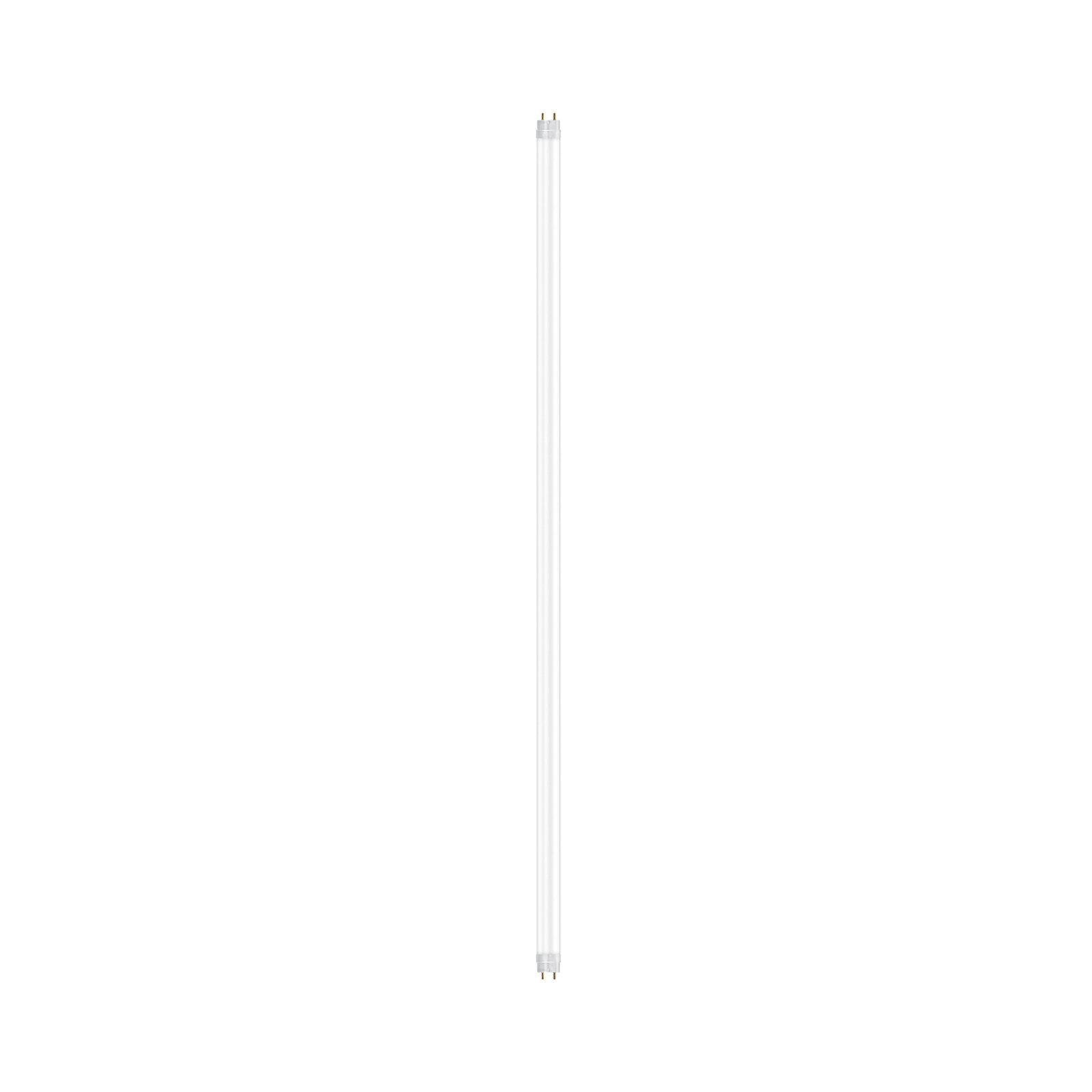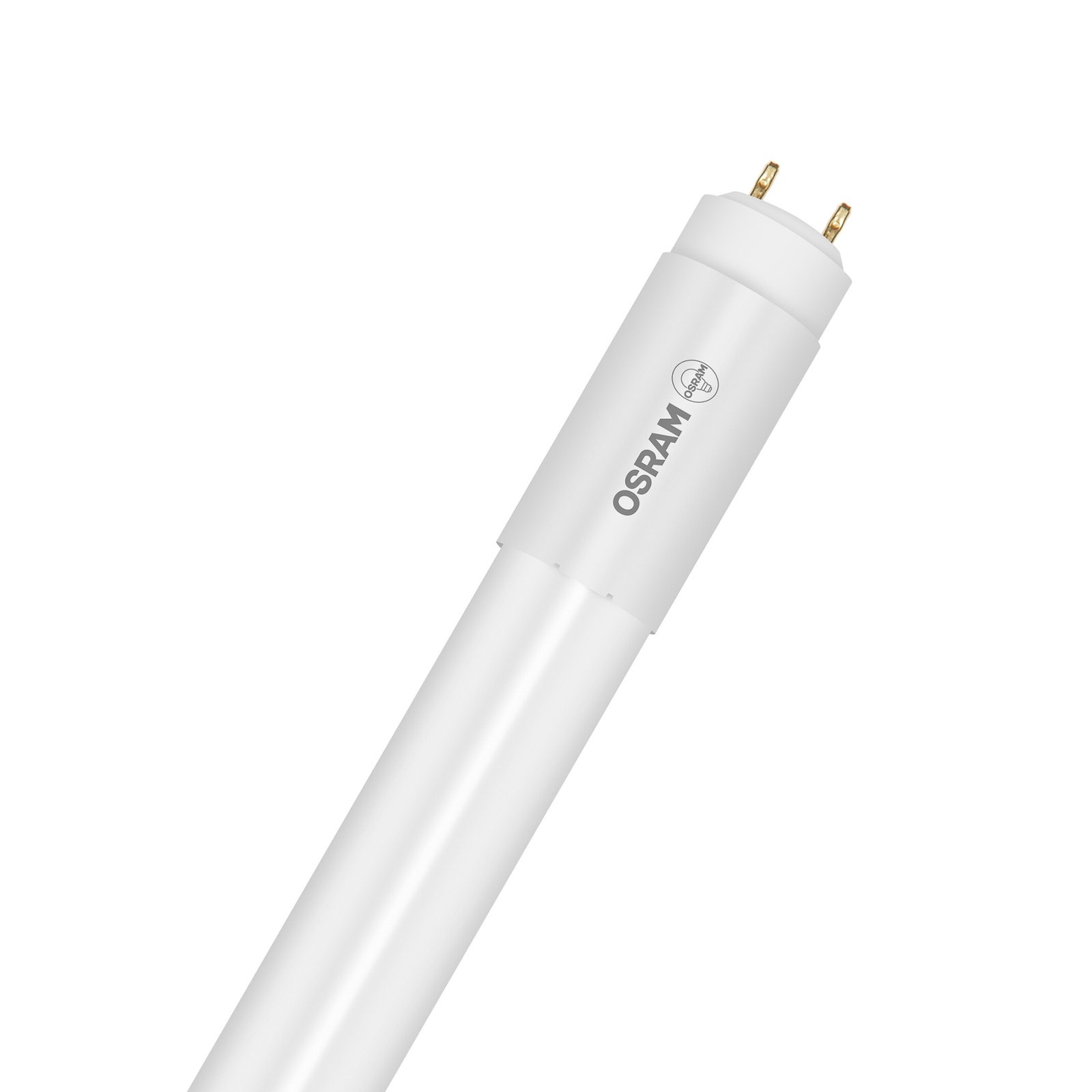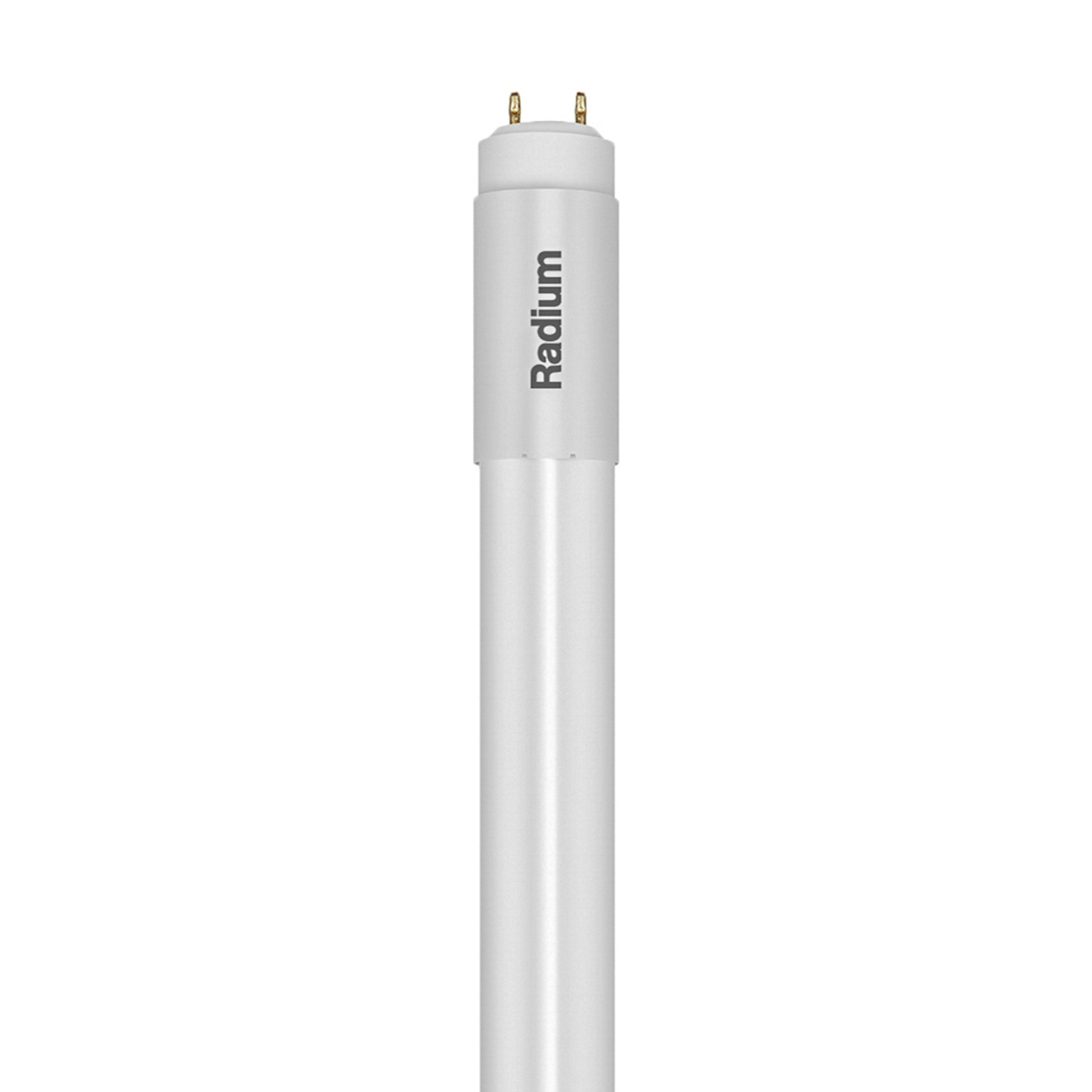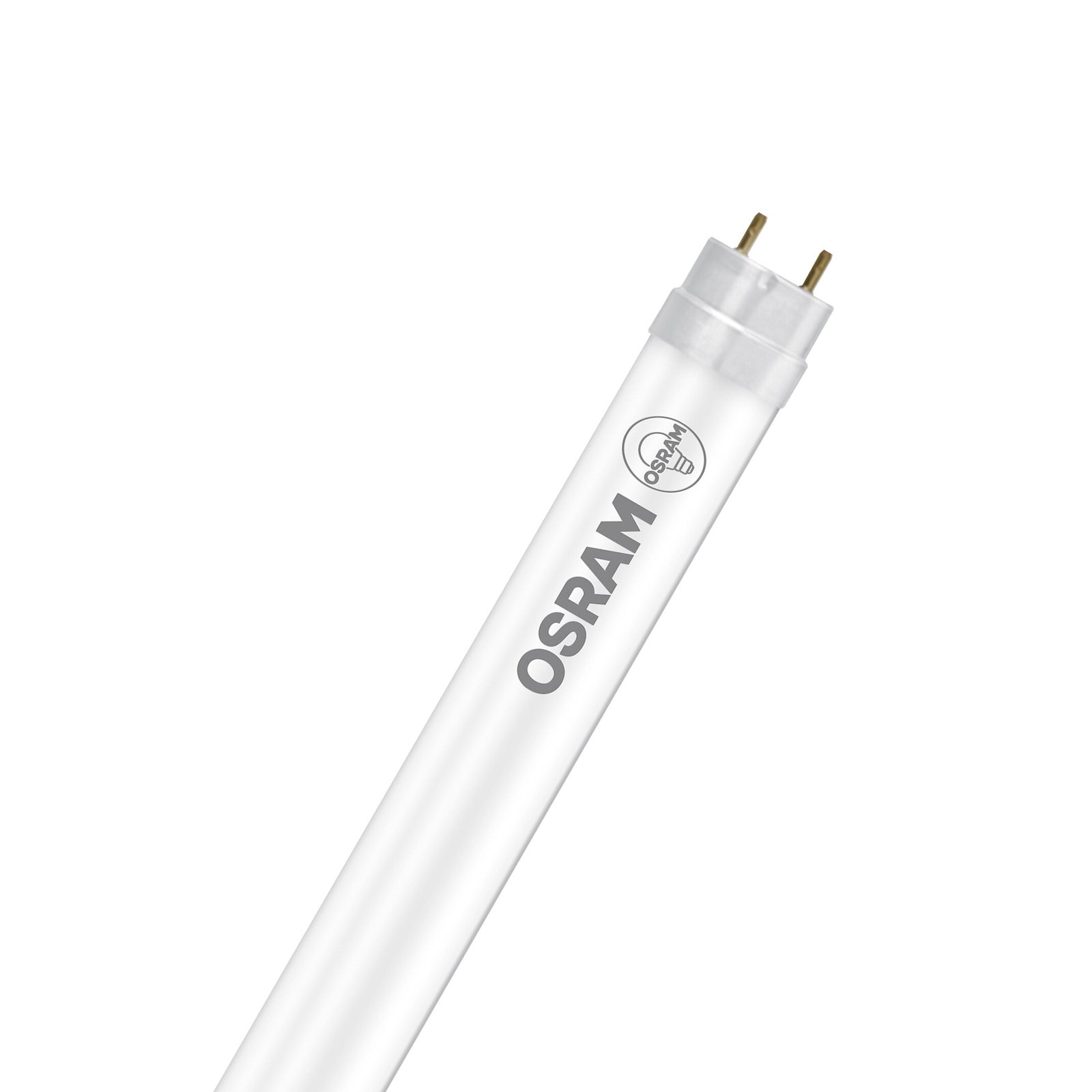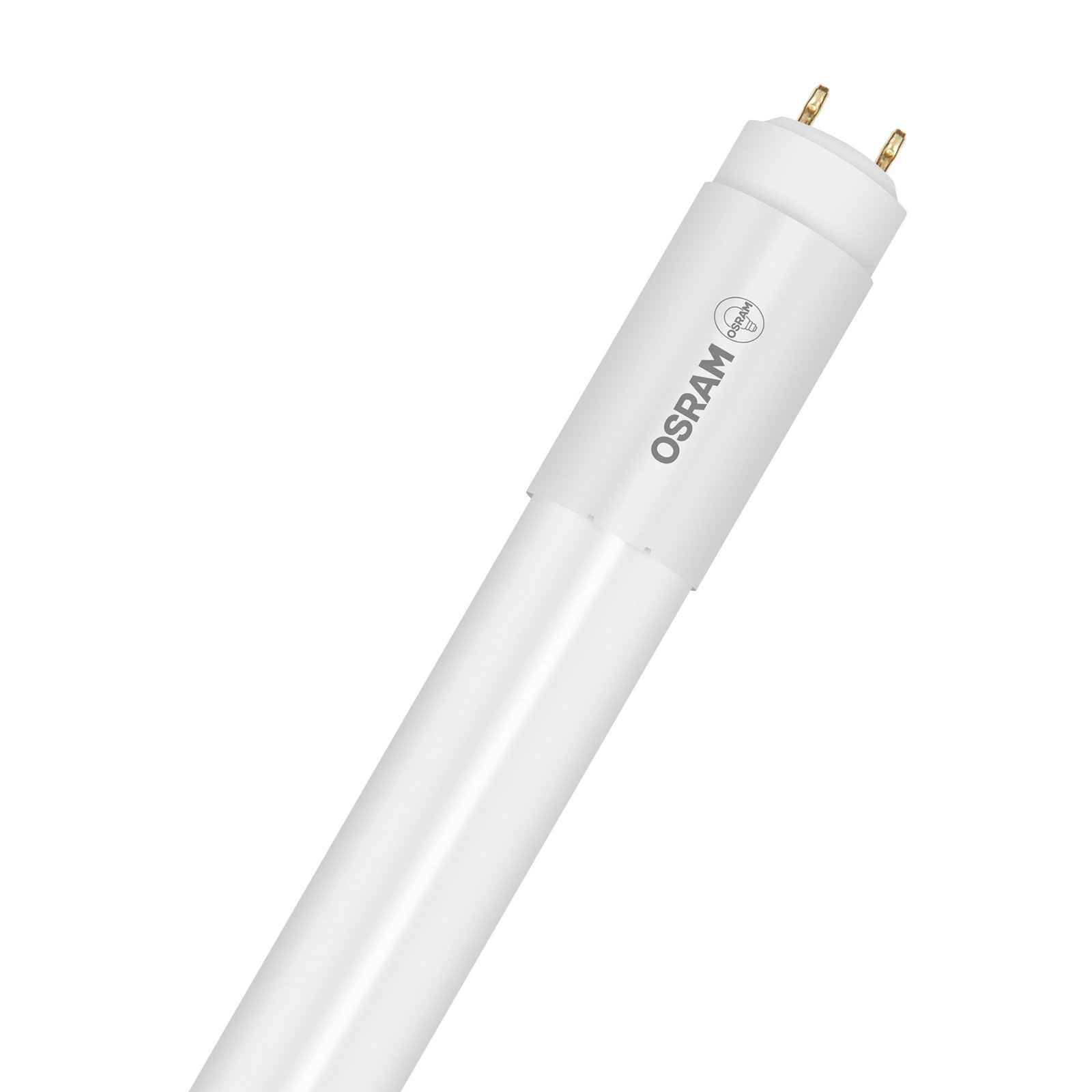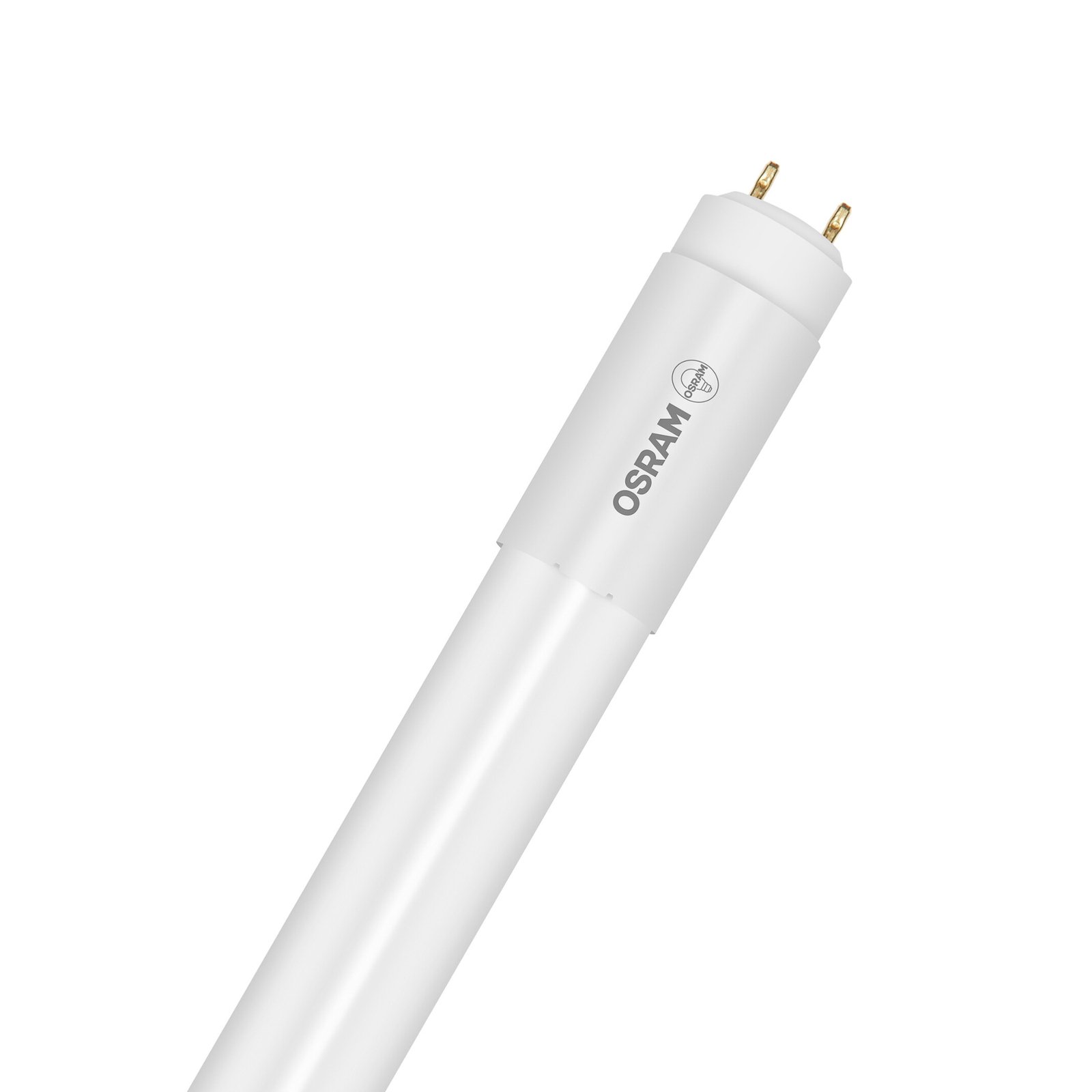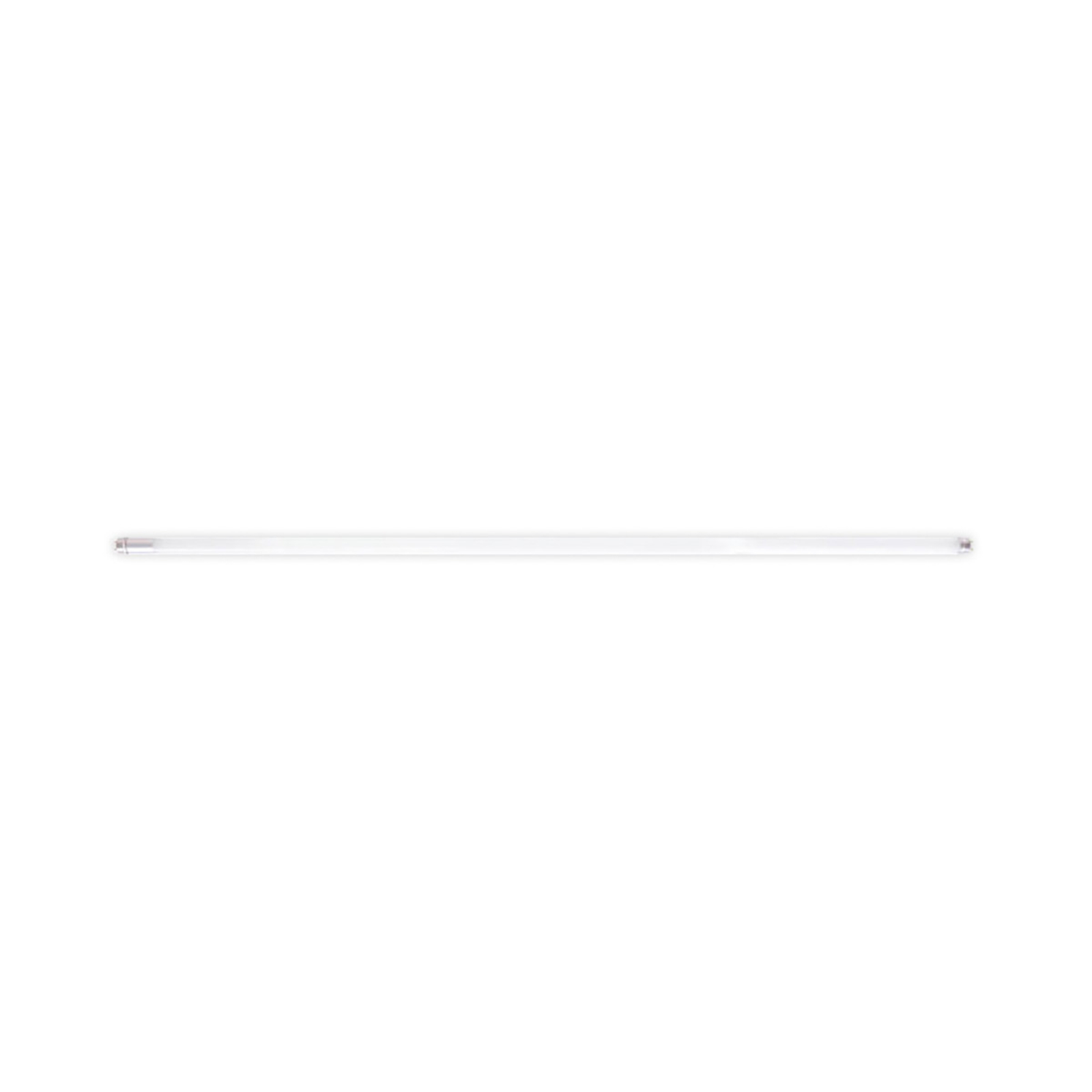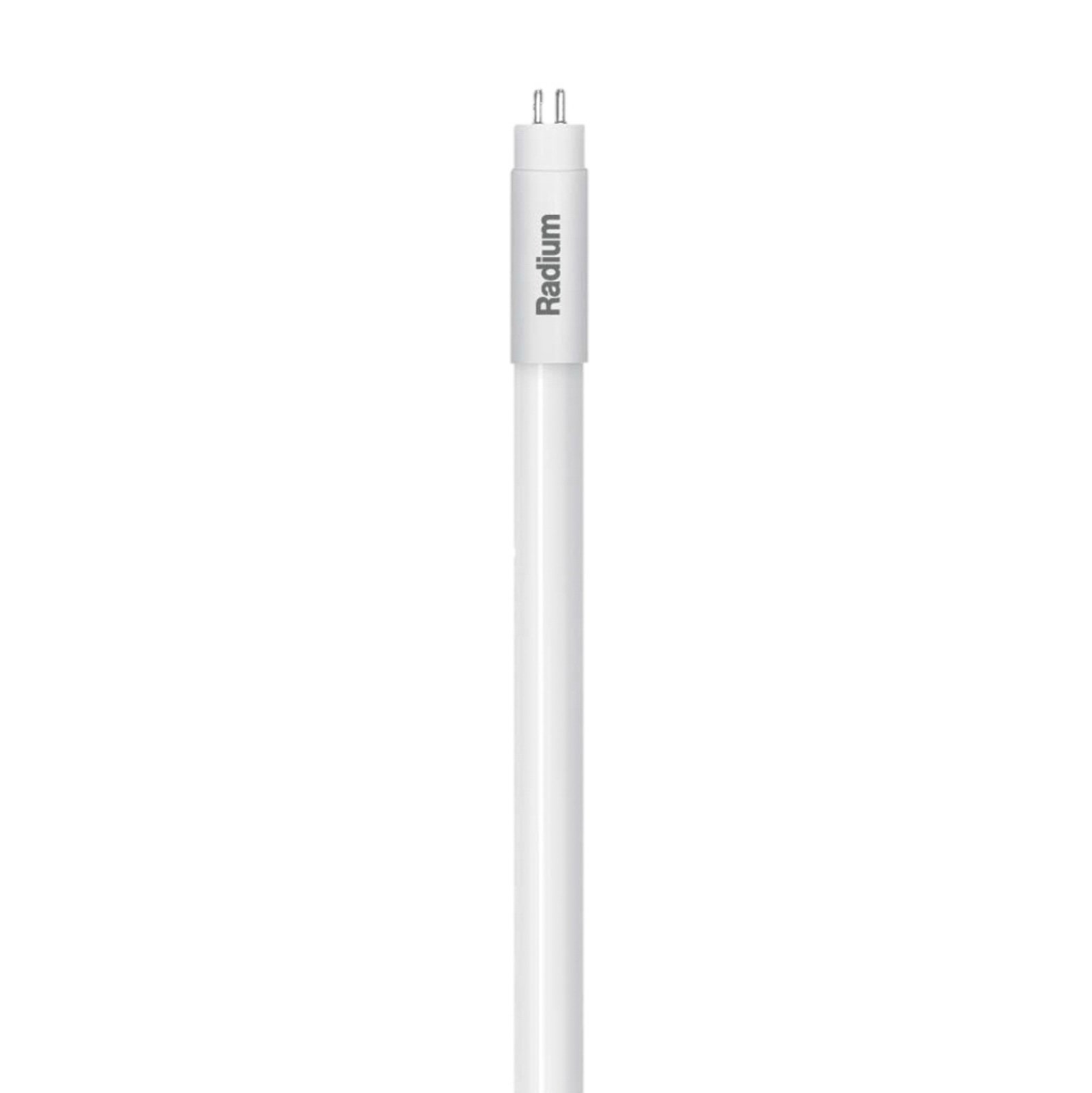- 50 days free returns
- Flexible payment options
- Europe's largest selection of brands
Extra 10% off over €109 & 15% off over €199
Fluorescent Tubes
Large-area lighting that won’t leave you in the dark
The classic fluorescent tube still sees lots of action, especially in the professional sector where they’re used to light offices, salerooms, trade halls and car parks.
But they’re still popular in homes too, especially in garages, cellars, bathrooms and laundry rooms.
What are fluorescent tubes?
Fluorescent tubes (and not ‘neon tubes’ as they’re sometimes known) contain noble gas and a small amount of mercury. Light is produced by a gas discharge process in which electrons pass through the glass tube and react with the fluorescent coating.
Fluorescent tubes are characterised by their excellent luminous efficacy, long life and good colour rendering.
Fluorescent tubes are always operated with a ballast (usually an electronic ballast, EB) which makes modern tube lights flicker-free and allows for dimmable options.
:format(jpeg))
Where are fluorescent tubes used?
Today, fluorescent tubes are mainly used for lighting utility rooms like bathrooms, cellars, workshops, garages and laundry rooms. Fluorescent tubes are also used for mirror lighting but, as with other interior and exterior lights, they’re increasingly being replaced by LED bulbs.
In the professional sector, on the other hand, fluorescent tubes are still used for lighting offices and salerooms, warehouses, stockrooms, industrial and trade fair halls and car parks.
:format(jpeg))
:format(jpeg))
:format(jpeg))
Three installation areas for fluorescent tubes.
Which lamp holders are available for fluorescent tubes?
Because of the widespread use of fluorescent tubes in the residential and commercial sector, there are several lengths and wattages of fluorescent tubes. A distinction is also made between the tube diameter and pin spacing, which are coded in the lamp holder or base designation.
T5 / G5 and T8 / G13 fluorescent tubes are the most popular.
When it comes to replacing fluorescent tubes, it’s important to pay close attention to compatibility.
Unsure where to start?
No problem - our customer service team is happy to help you - all you need to do is fill in our contact form and let us know where you’re coming unstuck.
For all other lighting operated by fluorescent tubes, suitable replacement tubes, including LED alternatives, are available in our online store.
:format(jpeg))
:format(jpeg))
Are there LED alternatives to fluorescent tubes?
Absolutely!
In fact, there are LED alternatives for almost every fluorescent tube.
These have higher energy efficiency, longer service life and are recommended for wherever you have fluorescent tube lighting.
But before you go replacing them all, make sure you know the base, length, brightness (lumen), colour rendering (Ra) and light colour (Kelvin) you need.
Unsure where to start?
No problem - our customer service team is happy to help you - all you need to do is fill in our contact form.
:format(jpeg))
Can you buy fluorescent tubes in different shapes?
Absolutely - thanks to LEDs, there are lots of different shapes available to suit your needs.
But before LEDs, which can be made to fit any shape imaginable, fluorescent tubes in different shapes were available, but options were minimal.
Well-known examples of ‘different shapes’ including magnifying glass lights in which the light source surrounds the central magnifying glass in a circle to provide shadow-free light. And another example is a fluorescent tube bent into a ring.
The use of fluorescent tubes in these forms is rare nowadays - unlike the shape options available for their LED alternatives.
:format(jpeg))
Magnifier lights like these use special curved fluorescent tubes with G10q sockets.
:format(jpeg))
Ring fluorescent tube with G10q base and a diameter of 22 cm.
Would you like to learn more about fluorescent tubes, their lengths, bases, brightness or suitable LED alternatives? Or need advice on any other topic related to lights or tube lighting? If so, our friendly team of experts would love to answer any questions you may have. Call today on +353 1 699 2138 or contact us via email.
The strike-through prices correspond to the manufacturer's RRP.
Included in the price of LED lights/bulbs is a contribution to recycling costs of €0.05. Included in the price of CFLs/fluorescent bulbs is a contribution to recycling costs of €0.15.
All prices include 23% VAT, delivery costs excluded.




































